#takes two seconds to find out its from Buddhism
Explore tagged Tumblr posts
Text
Just noticed something cool.
This is yuyu's account, and she was in charge of the storyboard for Y6.
And those:



Are Yuki Nakazawa's fanarts. It's fanwork. But she worked on the official content.
The last one makes the set not so innocent. Why? It was published before Y6. So it's not exactly a spoiler but we have some people with media literacy in the link click fandom. This? Not rocket science. As flashy as the dead wife trope, if you ask me.
We'll talk about the set as a whole.
Before I get into it, Yuki Nakazawa also published another fanart which, in retrospect, was an actual easter egg: "And Then There Were None"

This being established, we can assume there is something hidden there. Still, keep in mind that those are, once again, fanarts. It isn't going to stop me from noticing things. I recommend you look at each picture closely before you read any further.
First clue, which is solved: Vein is dead. Or pretending to be, probably. There are clear allusions of him leaving.
A word stands out: CAMFLAGUE. Twice actually: once on the poster and a second time on the magazine cover, concealed by Xia Fei's silhouette. This word? Not a word? it sounds a lot like CAMOUFLAGE though. Or so google keeps correcting me lmao.


which is an interesting word to hide in plain sight when you notice there are also two attempts at disguising Xia Fei as Vein: the coat and the glasses.
CAMFLAGUE is a made up 9 letters word. The Chinese tended to view life diametrically. So when a change occurred in one aspect of life, that change was a result of a change in its opposite. Therefore, as a symbol of extremity, "9" in Chinese Culture is also a warning, a turning point. In ancient Chinese Classic Yijing, or the "Book of Changes", wherever number "9" appears, it is a crucial point of change and transformation. FELIX also contains the number IX.
There is a glint to Xia Fei's left earring, a ring, and to Vein's necklace, a moon. First, earrings symbolize beauty and strength in Vaishnavism while in Hinduism, earrings symbolize elegance, strength, and identity, serving as integral ceremonial adornments, embodying transformation and the sacred nature of beauty in various narratives. Second, in tarot reading, The Moon is a card of illusion and deception, and therefore often suggests a time when something is not as it appears to be. Much to think about.

One object stands out in the bloody artwork of Vein: the blue and white Vase. Qinghua is traditional Chinese porcelain, painted in cobalt blue glaze on white porcelain. It's an art working on negative spaces. There are different patterns used for this technique, and lotus is one of them. I'm no expert in pottery, though there is obvious meaning lost in translation, as I love to tag it. However, the lotus is important motif, I can tell you that much. Mostly because of its relationship to Buddhism. Buddhism symbolism in Link Click is highly related to Vein's character (I made a long ass meta about this, go check it out if you have time to waste), specifically in term of "luck" and "enlightment".
Lastly, the artwork with Vein and the vase also show figurines of the characters in YINGDU. While a mini Lu Guang seems to be crying over a fallen Cheng Xiaoshi, Liu Xiao is looking right at Vein who is pointing at Xia Fei. It could mean many things so I won't expand on this gesture for now but it's worth mentioning.
In conclusion, I'd say there is a strong possiblity that Xia Fei might take Vein's place as Cheng Xiaoshi's killer, for revenge. He is looking for the truth and when he's going to find out who killed Vein, or who orchestrated his demise, he's going to go after them. He seems to have a good lead on people with powers too. And since he's studying applied physics, he might look for ways to give himself powers, artificially.

Of course, the presence of Liu Xiao in the fanarts and in Xia Fei's life is important but, as always, the mystery around his character makes any theory kind of pointless?
Don't worry, I still have ideas!
His relationship with Xia Fei is important to what is to come in Link Click season 3, that much is obvious.
The PV shows Liu Xiao as Xia Fei's agent or something, while Vein is watching over him from a distance, through screens. We know there is some kind of partnership between them even before that, despite the canon fact Xia Fei strongly dislikes Liu Xiao for some reasons. I think Liu Xiao is taking care of him for his own interests, though.
In Buddhism, whispering in the ear symbolizes a confidential communication method, reflecting the importance of privacy and personal expression in decision-making processes. Of course, in the context of YINGDU, we know it means Xia Fei is giving information on Cheng XIaoshi and Lu Guang to Liu Xiao, but we still don't know to what end.
Additionally, I'm working on a meta about what could be Vein, Liu Xiao and Xia Fei's powers. Basically, it's related to the fourth wall and how Link Click is starting to break it more and more in merch and other media. This meta made me think of it and I can't wait to share the concept with you all. It's based on the three wise monkeys that embody the proverbial principle "see no evil, hear no evil, speak no evil". Coincidentally, I do think Xia Fei is the one who speaks no evil and Liu Xiao is the one who hears no evil.
I think Xia Fei is just like Cheng Xiaoshi, emotion driven, but he's also very intelligent and surprisingly perceptive: he doesn't like Liu Xiao, he doesn't like working with/for him, he doesn't buy his friendly act. However, I don't see any future when he doesn't get used by Liu Xiao in his evil plans. With Vein out of the picture and Xia Fei's new motivation, it might not be easy to see through manipulations.
Wait and see!
Okay, that's all for today!
#link click#时光代理人#shiguang dailiren#yingdu chapter#meta#the daily life of alice's hyperfixation#vein#xia fei#liu xiao
73 notes
·
View notes
Text
Just like I broke down "paradise" in this post, I realize that I actually have to break down and change Xie Lian's famous "body in the abyss, heart in paradise" phrase. As is, it's not a mistranslation by any stretch of the word nor do I feel like it breaks the rhythm of language, which are usually my two biggest gripes. The phrase in it's original language is just as short and concise (as Ling Wen says, they sure do love their groups of fours):
身在无间,心在桃源 shēn zài wú jiàn, xīn zài táo yuán
The issue, then, is not so much a failure of the translation, itself, but a failure in translation between English and Chinese in general. What can be said in the hanzi through a couplet of 4 characters per line is actually a lot more complicated in English if one were to include all the Chinese context that the average English reader lacks.
The 无间/wú jian that Xie Lian takes from the ghost on Yinian Bridge whom he defeats and that has been translated as "abyss" in his phrase is a likely reference to the Avici in Buddhism (无间地狱/wú jiàn dì yù), the lowest level of hell where those who commit the gravest crimes suffer punishment “in perpetuum” without respite. In English, Avici is typically translated as "incessant" or "interminable," but I feel like "perpetuity" has a connotation of an infinity that feels... daunting. Personal preference, moving on. It's notable that neither the ghost nor Xie Lian use the entire phrase or else "Avici" would make a perfectly concise translation, but since it does not, I feel like just the "perpetuity" is enough to harken to this hell while maintaining the integrity of the original line. (Plus, there are other places in the text that use words closer to "abyss" in English, and I do not want to accidentally encourage false connections.)
Moving on to the second part of the phrase, 桃源/táo yuán is a phrase that absolutely can be translated as “paradise” or “utopia.” It comes from a fable we know in English as the “Peach Blossom Spring” and, in case you didn't read my linked post, it tells the story of a man who unintentionally drifts along a river into an idyllic society, of which the landscape was filled with peach blossom trees. This land is one where the ancestors of the inhabitants fled to, to escape political turmoil, but newcomers can only drift in coincidentally, and those who leave can never find it again. Under normal circumstances, keeping this translation as "paradise" would be fine, but the trouble comes in when a reader 1) doesn't know the original phrase being translated into "paradise" and 2) what the phrase means. Knowing that this "paradise" is specifically the Peach Blossom Spring is integral because this is the reason why Xie Lian is associated with flowering trees and becomes the Flower Crowned Martial God! The people carpet his temples and shrines in flower petals to mimic how the utopia of the hidden valley in this fable is carpeted by peach blossoms!
On that note, there is also an ideological flow to the two lines that is lacking when translated without the context. Theoretically, one can be reborn after going through Avici, but this is a very long and grueling trial of suffering from which the sinner cannot escape. They are trapped in, well, perpetuum, however, it is a trap they, themselves walked with full knowledge into. On the other hand, the Peach Blossom Spring can only be found unintentionally. The heart must drift into it without struggle and without the purpose of seeking it out. It's a very laissez-faire, "let nature take its course" outlook on things coming out of the first phrase where the ghost being addressed has had a very proactive hand in his fate. So the second line now feels like both an admonishment (that we know Jun Wu took very personally) and perhaps even a prayer, that even though the ghost may be stuck in perpetuity, atoning for crimes of the worst nature, if he is able to let himself go, to let himself drift wherever life may lead, he may one day find himself in the paradise he could never craft for himself.
So in short, "body in the abyss, heart in paradise" wins for conciseness and flow, but "body in the perpetuity, heart in the Peach Blossom Spring" introduces context for future references and deeper understanding.
24 notes
·
View notes
Note
hai i'm curious about what twin peaks is, can you explain it to me (preferably without spoilers) /nf
Oh, is it my birthday?! Yes I can do that!
I will say that I generally do not consider things that happen in the pilot or first episode of a TV series to be "spoilers" so much as "premise". So anything I say here that's direct plot-stuff will only come from the pilot. All right? Let's dig in!
CAPSULE SUMMARY
Twin Peaks is a surreal/magical realism/police procedural/drama/horror/soap opera produced by David Lynch and Mark Frost. It had two seasons of 30 episodes total, a film (Fire Walk With Me), and a third season that came out 25 years later in 2017.
In the pilot episode, a teenaged young woman who everyone in town knows, Laura Palmer, is found murdered. The town reels to cope with her demise and the investigation. A second young woman is found alive and wandering--and she crossed state lines as she wandered. The police call in the FBI, since it's now a multi-state case, and in walks Special Agent Dale Cooper.
As Cooper begins his investigation, he discovers that there's far, far more going on in Twin Peaks than he'd first anticipated.
[NOTE HERE that Twin Peaks covers a LOT of extremely tough and triggering topics over the course of its run. DoesTheDogDie should have a list of all triggers, although those will come with spoilers. The main one to be aware of is that sexual assault, domestic abuse, and rape are discussed. The aftermath of these crimes is depicted. It's 1990, so it's not graphic as in Law & Order: SVU, but it is very much present. Please take care of yourself first!]
NOT-SPOILER REASONS TO WATCH IT
It is a vital historical work of art. Twin Peaks revived the police procedural, popularized soap operas as an art form, launched and relaunched multiple acting careers, introduced surrealism to multiple generations of TV watchers, taught basics of Buddhism, helped spread awareness of the Free Tibet movement, and inspired countless references and imitators. When you watch Twin Peaks, you'll feel like you've seen it before... because you've almost certainly seen something which only exists because of Twin Peaks.
David Lynch is Autism Patient Zero who does not compromise his writing or his vision for NT audiences. He writes dialogue and directs actors in a way that can only be described as "everybody's got the autism accent", and it is a DELIGHT to experience.
The visuals are, often, so strong that you will forget how to breathe. Many of the sets and locations are treated like characters in and of themselves.
The title, Twin Peaks, ties into the show's central themes about identity, which is one of my favorite themes in fiction. What makes you who you are? If there was someone who looked a lot like you, would that compromise who you are? What if they have the same name as you? Are you no longer who you are if you can't remember your past? Is it sometimes a good thing to change your identity? What if everybody thinks you did something unforgivable, but you don't remember it? Does society require all of us to have public faces and private faces? Does anyone really know another person's private face?
When I first watched it, nobody shipped Trucoop (Cooper with the local police sheriff, Harry S. Truman). Now it seems like everybody does and I am not alone, yaaay.
Features one of the very few trans characters in media at the time who was unambiguously positive!
Watch an episode, then pull up the IMDB and see who everyone is. I guarantee that you'll almost always find SOMEone who was famous for other stuff. If you like Star Trek, you'll find that half the damn cast was either on TNG or DS9. It is honestly astounding to me that Jeff Combs wasn't on the series (because, I assume, he was shooting Bride of Re-Animator and other stuff).
THINGS TO WATCH OUT FOR
The subtitling in some versions of the show (on DVD specifically) is really bad and unreliable. I found that the Netflix subtitles were OK. If you don't know about OpenSubtitle, I recommend using them to find better subtitles in case you need them.
As stated above, the show gets into really dark themes, and it does not shy away from them when necessary. I feel that these things are addressed in a sensitive way and frequently related to plot, but it hits everyone different.
The music... eh. I like the electro/late 80s theme and the instrumentals that back most of the scenes. But every time someone sings, I get the cringe. I've never been able to get on board with what Lynch thinks good music sounds like. But a lot of people do, so that could just be me.
It takes a lot of work to watch this show. Since so much of it is visual, it is absolutely a show you have to watch with no distractions. I found it to be worth it--past a certain point, I didn't want any distractions. But I get where it's a sacrifice of time and concentration.
If you watch it and enjoy it, you will probably end up with Lynchian Syndrome, where you are compelled to watch every other thing David Lynch has ever made and develop elaborate hypotheses on how they're all in the same universe and suchlike.
So yeah! I hope this gives you an spoiler-free idea of why this show is so special, and if you had any other questions about it, let me know!
#twin peaks#special agent dale cooper#asked and answered#nothingenough speaks#sheriff harry s truman#laura palmer#who killed laura palmer#trucoop#c'mon you guys we can call it trooper#autism patient zero#david lynch
45 notes
·
View notes
Text
“I'm happier than I've ever been at any time in my life. It's not because of what I own, it's because what's inside of me.”

Yes, I’m 80.
It's as hard for me to believe as I hope it is for you, but not for the reasons you might expect.
I’m not unhappy about getting older —I’ve always said age was just a number, and I truly feel that way. I just can't believe how much time has passed since I was that pony-legged girl in Nutbush.
For the most part, I don't look backward.
I'm so busy living life that I get caught up in the moment — the here and NOW. But, as I look through the photographs selected for this book, my past comes to life in a good way: my performances, collaborations, friends, places, styles (my wigs!), and the gradual change in my presence —my attitude — as I became stronger, more confident, happier, loved.
I'm always surprised when people find meaning in my story. This time, I'm surprised by my own reaction, because I'm moved by these beautiful images of my journey, from the early years, when I first became Tina, to today. Each picture takes me to a new place and sparks a different emotion.
I've had the privilege of working with so many legendary photographers and designers, and I'm so grateful to all of them for their incredible ability to capture the truth in my face and the energy of my movements. When I see their work in this book, I feel as if I'm dancing through the pages, and it makes me very happy.
I suppose it's a good exercise to think about your life on your birthday. As a Buddhist (and as someone who has lived a long time), I've learned that there's birth, the day you're born, and rebirth, when something changes, or you're given a second chance.
I've had many experiences that were rebirths of one kind or another. The ones that stand out ...
That night at the Club Manhattan, when I ignored the butterflies in my stomach and jumped up on the stage to belt out a song for Ike Turner and the Kings of Rhythm, I realized that singing could actually be my profession. I wrote in my high-school yearbook that I aspired to be an entertainer, while most of my fellow students said they wanted to be secretaries, nurses, or teachers. This was the first time I dared to hope that my dream might come true — and it did!
I had another one of those moments a decade later, when I stood before an orchestra and a choir of back-up singers and recorded "River Deep—Mountain High" for Phil Spector. I heard a voice coming from deep inside of me — my voice — that had been waiting to be set free. Once that genie was out of the bottle, it was never going back.
I vowed that someday I'd sing my music, my way. It took me a little time to get there, but it was my destiny.
Embracing Buddhism was the start of my spiritual rebirth. I've always been a spiritual person, but when I learned how to chant, a fog lifted and I saw life and all its possibilities more clearly. I realized that help comes from within and peace comes from individuals working on themselves to be better. this feeling has never left me.
Walking away from Ike was truly like being reborn. A lot of tears went into those painful times. I've talked about it enough. There's nothing more to say. But it's all gone now— I let it go. I came out the other side, standing on my own two feet, excited to be free. When I believed in myself, I started on the path to true success.
The best part: my long-standing relationship with my audience. It never mattered to me whether I was singing for ten people or one hundred and eighty thousand, as I did on that incredible, record-breaking night in Brazil. I was always there for the people and, thankfully, they’ve always been there for me.
My love affair with Erwin is what truly transformed my life. Thirty-four years! After so many happy times, including our fairytale wedding, we faced the terrible news that my kidneys were failing, and the outlook was grim. I decided that if my time had come, I was ready to accept it, that's the Buddhist way.
Then, Erwin offered me one of his kidneys, and he did it so lovingly that I had to accept. I like to say that my new birthday is April 7, the day of the transplant, the day my husband selflessly gave me the gift of life and my body was born again.
As I turn eighty, I'll be celebrating the old, the new, and everything in between. These days, I'm very much a child when it comes to my birthday. I get excited as November 26th approaches because I look forward to being with Erwin and receiving greetings from all over the world. I love reading the cards, which I display throughout the house. I love picking out the cake from my favorite bakery in Küsnacht. There's nothing I love more than a birthday party, even if it's a small dinner with close friends. One thing I've learned is that the older you get, the more important it is to include young people in the festivities, because everything gets a little bit louder and light-hearted when they’re at the table.
I cherish these celebrations, probably because it wasn't always that way. There were no cakes when I was growing up, no candles, no presents. That's alright — I didn't expect them, I didn't expect anything, especially after my mother left and I was on my own. Later, when I was on the road with Ike, we were too busy to think about birthdays. I was usually in a car or on a stage in places like Baltimore, Boston, even Denmark and France. Aside from the occasional cake, there wasn't much time — or cause —to celebrate back then.
Everything changed after I went out on my own. It was hard at first because there were lean years, but there were good times too. I remember one birthday when my friend Rhonda gave me a bicycle that was made the year I was born—1939—which I guess means it was vintage! By the time I turned fifty, I was ready to celebrate in style, with a party at a beautiful club in London, my new love, Erwin, by my side, a Dior ball gown that made me feel like a princess, one thousand glowing candles to light the room, and a gathering of dear, dear friends. I've been blessed with many wonderful parties since then and I'm sure we'll do something special for my eightieth. Erwin is being very secretive, which is usually a sign of a nice surprise.
With age, or should I say maturity, I’d like to think that I've become wise in some way. As time passes, I find myself being very analytical, more so than I was in the past. I take things apart and try to find the truth in it. But I don't dwell. I'm not bothered by a lot of things and if I am, I really get right to dealing with it. There's still some doubts around the corner, some questions, but I believe I will find the answers, and the quest for knowledge is what keeps me going. I have never lost my sense of wonder and my belief that anything can happen in this life.
What am I most grateful for?
That I survived it all without hating or blaming anyone and that I had honest, genuinely good people to help me along the way. i think I was born with an inner strength, the strength to go on. That's my birthday wish for you: strength and resilience when you need them most. May you always find a way to turn poison into medicine.
So, I say Yes! Yes! Yes! to 80 ... and whatever comes next.
Love, Tina
Works Cited:
Turner, T. (2020). Tina Turner: That's my life. New York, NY, United States: Rizzoli.
5 notes
·
View notes
Note
From some random post we saw while doomscrolling through syscourse(which, are you alright? You're the top poster, which isn't really something to strive for in one of the most hate and rage driven tags systems can find themselves in on tumblr... should take a mental health break every once in a while):
Because, frankly, the anti-tulpa narrative was manufactured to shutdown created systems, and present bigotry in a way that appeared progressive. People aren't actually against words from other languages and religions being used in new ways. They're against these words being used by endogenic systems.
As a pro-endo mixed/POC system who has spent hours upon hours trying to understand the tulpa language discourse argument- I'm honestly really fucking hurt by this hugely inaccurate assumption. I don't see how we're trying to shut down created systems, what i see is trying to educate and steer people away from a term that was created through ignorance, racism [albeit not forwardly malicious], and cultural appropriation.
Tulpa creation bears no connection to Tibetan Buddhism anymore —not that it ever really did, given this exact phenomenon is not actually mentioned to exist, ever, by, i forgot the name of the person who invented the term but i know she was a) white and b) racist in ways outside of this — but is still touted around as being connected and part of that spiritual practice.
It's not about "we dont want endos using this term." It's that we want the term to stop being used ALTOGETHER. We personally have witnessed traumagenic systems exploring creating headmates, and we have steered them away from using tulpa language in favor of "parogenic" as a term.
It saddens us that you can just so brazenly dismiss it as a whole as shutting down created systems while so much else is going on that you're choosing to ignore.
You have a good heart - do more research into why people are saying what they are and don't just dismiss them like that. Please don't speak over those people who are a part of the culture being appropriated, simply because of refusal to change.
And yes, we asked this on anon not out of cowardice, but because we'd really rather not start getting a bunch of death threats on our main blog.
-Enzo
Okay, let's try a thought experiment. Imagine for a moment that there are two universes. In one universe, the anti-tulpa narrative begins and is popularized because it's harmful to Tibetan Buddhists as an ethnoreligious group.
In the other, the anti-tulpa narrative is concocted and pushed heavily by anti-endos as a way of delegitimizing one of the strongest and most well-researched endogenic communities.
What would you say the differences would be between these two universes?
Personally, I think if one were to enter the first universe, you would find several things.
Anti-tulpa sentiment probably would have begun in the early 2000s as the internet was coming into more sidespread use and shows like Supernatural and X-Files would use tulpas as horror monsters.
Similar to above, once backlash started, it would be hitting all presentations of tulpas, including in creepypastas and its use by the SCP Foundation.
Much of the backlash would be coming from members of the Tibetan Buddhist community, including at least some spiritual leaders because yes, religions have hierarchies of leadership.
Well, what about the second universe? What would we expect that universe to look like? Personally, I would expect the following:
There would be zero trace of anyone ever taking issue with the tulpas in shows like Supernatural or X-Files prior to tulpamancy being formed.
All backlash would be focused solely on tulpamancers. Nobody ever would mention the SCP Foundation, Mandella Catalogue or creepypastas about tulpas.
Most of the anti-tulpa backlash would be coming from system circles, and would be heavily pushed by anti-endos. While you might be able to fund a small handful of Tibetan Buddhists who have been convinced by anti-endo rhetoric that it's bad, there would be no spiritual leaders getting involved and most Tibetan Buddhists you ask outside of system spaces wouldn't care.
Which of these two universes do you feel most resembles our own?
Before you answer, here's a fun thread comparing the differences in people's opinions on r/systemscringe vs those on r/Buddhism
When r/systemscringe is pushing a narrative that the word is appropriation while actual Buddhist communities on the same site shrug their shoulders and don't care, this should send up immediate red flags as to the legitimacy of this whole controversy, and which groups are actually interest in pushing it.
Now, I am not suggesting that none of the very small handful of actual Tibetan Buddhists who have taken issues with the practice don't legitimately feel as they claim to.
The problem with propaganda is that it's often very good at manipulating people's emotions. If it couldn't do that, it wouldn't be effective.
We've seen this with similar anti-endo smears, like the ones claiming "system hopping" was appropriated from RAMCOA systems. And sure enough, despite its use in the plural community predating any RAMCOA connection by a full 16 years, this claim still persisted. And some RAMCOA systems were even manipulated by these lies and convinced endogenic systems were stealing terms from their community.
We actually see this same tactic over and over again.
We see it with "system hopping" which they claim was stolen from RAMCOA systems. We see it with "sysmed," which they claim is stolen from the LGBT community. We see this with the very concept of plurality itself.
The fact of the matter is that this has become a core manipulation tactic in the anti-endo playbook, designed to sew division.
#syscourse#tulpacourse#pro endo#pro endogenic#tulpamancy#tulpa#pro tulpa#sysblr#multiplicity#actually plural#actually a system
35 notes
·
View notes
Text
Dragon Age Demons vs Real-Life 'Inner Demons'
Way back in the summer of 2015, my symptoms got so unbearable I was bedridden. 20 years old and experiencing psychosis, quasi-hallucinations, and actual, unending panic for the first time. It marked the start of a condition that has never stopped since.
My aunt (and other relatives) helped me develop proper mindfulness skills based off of our homeland's folk Buddhism - the 'second arrow'. The meaningless of forgiveness. Devaluing control. And something that struck me as a new Dragon Age fan … 'Possession'.
Well, when translated to english, you'll find texts using the word 'insight' rather than 'possession'. But that's the word my mom translated from off the top of her head, and it immediately resonated with me.
"Imagine your panic as an inner creature. Something that is also you, but is acting independently. Treat your panic with kindness and mentorship, not antagonism. The more you struggle in the spider's web, the worse things get. But if you nourish what's hurting in you, let them tantrum, then come back in to nurture."
Up until the 2010s, the most acclaimed mental health books you could buy written in the english language would most certainly be christianity-influenced. Maybe not overtly, (but you'd be surprised how many have a chapter about "insert-book-topic-here and Christ") but there's little hints like how the reader must have left home at 18 to avoid mooching off their parents, or how to 'turn guilt into something productive' (???), the use of the word 'gamble' as a bad word, etc. But these books tend to include a chapter that would be some weird bullshit like "The Dark Souls Of Respawning?? What Daoism Says About Immortality" and take a brief moment to talk about the radical, never-before-heard-of methods from across the pacific that Will Turn Your World Upside Down.
Behavior therapists (of the 1950s) were aware insights about the origins of the problem usually weren't helpful. Exposure to the thing the patient feared was often curative. -When Panic Attacks by David D. Burns MD, Chapter 18, "Taking a page from the Tibetan Book of the Dead"
Now, it's no secret that the Dragon Age serial is very. Um. Christian. Catholic, specifically. Faith is written to be an unequivocally redeeming trait. Attempts at inventing fake elf/qunari/Tevinter 'religions' still have them be belief-based, colonialist, and conversion-heavy, while also at the same time implying that the 'Maker' of Chantry faith is the single actual true god.
So it's no surprise that the demons and spirits of DA are very seven-deadly-sins. Party banter and side-quests do point out the euro/christian-centricity of this demon categorization (Merrill, Solas), but that doesn't mean shit if, in overall story and gameplay proper, Pride is the most powerful demon while Faith is virtue at all.
So here I am, lying in bed and only capable of just riding the waves of panic day after torturous day. You bet I'm gonna try to geek-erize my symptoms. If people do it with Jesus, then I can do it with Dragon Age.
Enter Vigilance the Spirit. I was an at-risk young Rivani mage, so their Magic Welfare Government helped me join their クサビ-依り代 program and matched me with a spirit to induce possession. Can't boil two skulls in one pot, so to speak. I could have chosen to do their hemispherectomy program (I am made Tranquil but carry around a piece of the Fade like a pacemaker that keeps me perfectly lucid, only turning off when I sleep), but that comes with its own risks.
But it doesn't take much for a spirit of Vigilance to do a 180 and become Panic. They're still Vigilance, and I am still me, but the taste in the mouth is different. Our life will need to adapt.
I will not kick myself for 'failing' my friend. Vigilance has turned to Panic, yes. But they have always been one. Now, so are me and Panic. Such is the nature of spirits.
If I am kind to my spirit, then I am kind to myself. It's what we both deserve.
#dragon age#DAI#DA2#da:o#da: origins#da:d#dragon age dreadwolf#dragon age discussion#dragon age meta
32 notes
·
View notes
Text
The Fable (2024) Review
Warning: Full spoilers ahead
Director: Raam Reddy
Runtime: 119 minutes
Language(s): Hindi, English, and Pahari audio; English subtitles
Certification: PG (Singapore)

My invite to the screening of The Fable at the 35th Singapore International Film Festival. Director Raam Reddy and lead actor Manoj Bajpayee were in attendance.
“How much knowledge do you need to have to engage with something in a meaningful way?” I was reminded of this question posed by the video essay Reading Binging Benning (2018) while writing my review of The Fable (2024). The video essayists were commissioned by the International Film Festival Rotterdam to introduce a screening of James Benning’s Readers (2017)—but they had no access to the film. They had two stills, detailed information about the film, and access to some of Benning’s other works, but these don’t replace the film itself.
My situation with The Fable isn’t as drastic as these video essayists’, since I actually did watch it. There was even a pre-screening introduction from the director himself, who expressed an intention behind the film: he wanted the audience to undergo a “spiritual” experience.
I did not have this experience.
The Fable has elements that sound like the film could be spiritual. It is slow-paced. It features a group of ascetic people. They chant in unison. One of them meets with the protagonist’s daughter, Vanya (Hiral Sidhu), and they hum together, seeming to have a quasi-telepathic conversation. The protagonist’s wife, Nandini (Priyanka Bose), performs songs about spiritual concepts.
In my research for this review, I discovered that the first song Nandini sings is “Shivoham”, also known as “Nirvana Shatakam”. I frequently found the composition being attributed to the Hindu philosopher Adi Shankara. I didn’t manage to find out what the second composition is, but from what I remember, Nandini sings about a place of seemingly peaceful nothingness.
Maybe the film connects better with Hindu audiences, or at least, with those who are quite familiar with Hinduism, unlike me. However, I feel that it should still be able to resonate. I’m not that knowledgeable regarding Shintoism or Buddhism either, yet I was in awe at Princess Mononoke (1997). Earlier this year, I rewatched the Studio Ghibli film, intending to take mental notes at the same time. It wasn’t long before I forgot all about taking notes. Princess Mononoke entranced me. On the other hand, The Fable was generally boring.
No, a film being boring doesn’t necessarily make it bad. For example, I’d describe Forgotten Planets (2018) as “boring”. Something about it made me want to rewatch it, though, which I did less than a month later. (Granted, there was also the motivation that I had easy access to the film at the time, something which was likely to change in the future.) I think what I liked about Forgotten Planets was its calming mood. Even though neither of its two protagonists are content with the state of things, it’s still a very slice-of-life story without much tension.
The Fable, however, isn’t a pleasantly boring film. It maintains its tension for too long, and for too long at the same level of intensity. The tension mainly comes from the mystery of who is burning the protagonist’s orchards and why. This premise sounds dramatic, but the problem is that it rarely feels like anything is at stake for Dev (Manoj Bajpayee).

Via SGIFF.com
The programme guide of the 38th Leeds International Film Festival (LIFF) calls The Fable a “political allegory”.
I can see that the film touches on the themes of colonialism and class. At the beginning, a narrator from the future tells us that it was the British who gave the orchards to Dev’s family. The British gave them to his family as a reward. At the end, the narrator says that Dev and his family suddenly disappeared one day but not without a letter. In the letter, Dev declares his land returned to the villagers who originally owned it and that he gives the family residence to his former orchard manager, Mohan (Deepak Dobriyal), who we discover is the narrator.
Where did Dev and his family go? The filmmakes it quite obvious that they are the fairies in the…well, fable that the wife of an orchard worker tells her young son. “It’s about a family who looked just like us,” the woman says. “Even they thought they were like everyone else. But the truth was, they were special souls.” She goes on to say that these “special souls” are actually fairies who had come to earth and forgotten where they came from.
At the start of The Fable, Dev is shown to have a hobby of designing and building wings that let him fly around. At the end, we catch a glimpse of winged figures soaring through the clouds and a pair of his engineered wings attached to a stake in the woods, fully unfurled.
LIFF describes the film as not only a “political allegory” but an “incisive” one.
I can’t see the allegory.
What was the point of making Dev and his family fairies? Having the land returned to their original inhabitants seems to display an anti-colonialist sentiment, but this is undermined by implying that the “special souls” in this story are the characters who have ties to the colonisers.
As a Muslim, I connect to the idea that there is a better world beyond this earth. I believe that even if someone’s life appears to be full of hardship and pain, if they endure it patiently and correctly (i.e. according to God’s commands), then they will attain Paradise in the hereafter. Leaving this world would be liberating for them.
I didn’t feel any sense of liberation when Dev and his family leave earth. Of course, having your land mysteriously burn away before you would be terrifying for anybody. The fire even reaches the plants before the family’s doorstep. But when compared to the tribulations of their employees, those that Dev and his family experience don’t feel particularly heavy.
During the mysterious fires, the patwari (also known as a village accountant) continuously tries to impress wealthy landowner Dev by “assisting” in the investigation, including getting police officers to make arrests. After a huge fire on a mountainside, the patwari brings the police and tells them to make five arrests no matter what. So, without any sufficient evidence, the police arrest five orchard workers who risked their lives to put out the raging fire. Who will assist the villagers? Dev eventually stops the police from taking the arrestees away—but he appears to do this reluctantly. Later, he lays off all his staff.
After all that has happened, is it really a liberation for Dev and his family to fly away to their fairy home?
What’s the allegory?
In Reading Binging Benning, Kevin B. Lee talks about his experience watching his first Benning film, RR (2007). Lee says, “The whole time, my head is spinning, trying to figure out, ‘Is there something in front of me that I’m just not seeing?’ I was facing an image that wasn’t telling me how to read it.”
Maybe I don’t know enough about the history or cultures of India to appreciate the film. But how much do I need to know? How much knowledge is fair to assume the audience has? It sounds strange, but The Fable could probably do with more exposition.
Rating: 1.5/5
Thank you to SGIFF for the Cinephile Pass and for the invite to the Special Presentation of The Fable.
#sgiff#sgiff35#35th singapore international film festival#film criticism#film review#movie review#raam reddy#the fable#manoj bajpayee#deepak dobriyal#indian cinema#indian film#drama#magical realism#magic realism
4 notes
·
View notes
Text
A religion of peace ?
Well now, that's a hell of a clickbait, isn't it? Well, believe it or not, this isn't MAGA-style fearmongering. There's actually a nuanced take in there. Just keep reading.
Recently, I answered a post talking about how Islam has been romanticized and mythicized by the Western Left, based on two myths :
The first myth is the idea that Islam is an intrinsically revolutionary religion that fights against Imperialism, Colonialism and Capitalism. The fact Islam has a History of imperialism and violent colonization, supported by a large a vivacious trade network is conveniently forgotten.
The second myth is that Islam is intrinsically more tolerant than the West, because it has bits in its holy text that say to let Christians and Jews live in exchange for a tax. Not everyone is aware of the tax. The conditions associated with the status of Dhimmi, the social and legal violence that comes with it through obligations and restrictions is not explored.
And quite often, when this is brought up, I see people say that "Islam is a religion of peace" as a debate-killer. Muslims and non-muslims. But is it?
Was the Islam of the Rashidun Caliphate, as it spread out of Arabia with violent conquest, a religion of peace ?
Was the Islam of the Ottomans, as they abducted Greek children to turn them into slave soldiers away from all their roots and never to see their famillies, a religion of peace ?
Was the Islam of the Berber raiders that were stopped at Poitier in their Razzia, a raid to kill men and enslave women, a religion of peace ?
Is the Islam of Hamas and ISIS, who yearns to murder non-muslims and openly dreams of world subjugation, a religion of peace ?
And I know what you're going to tell me.
The House of Knowledge in Bagdad allowed thinkers of many creeds to talk as equals! But for how long ? How long did this period last, and how mythicized and embellished is it ?
Al-Andalus was a beacon of tolerance and acceptance, a jewel of culture that was destroyed by the Reconquista, another show of Christian intolerance and cruelty ! But how long did it stay thus ? Did it remain tolerant as a constant throughout its History ? And, wasn't it rather ... colonialist in nature ? Neither Berbers nor Arabs are native to Iberia, after all.
I'm not saying Islam is evil. In the hands of many, it is not. I have eaten, joked and worked with people whose Islam IS a religion of peace. I now teach some whose Islam IS a religion of peace. There are millions of Muslims, in my dearly loved country of France whose Islam IS a religion of peace and who often are our main allies in finding out terrorists before they can kill. Millions who simply want to live, freely and in peace, away from violence.
And it is a disservice to them to say that Islam IS a religion of peace, wholly, totally, entirely. It is a disservice to them to make such a broad, uncompromising statement, because it kills and banishes reflection and thought and leaves the average Muslim at the mercy of extremists that get the benefit of the doubt long after it should have disappeared.
Islam CAN BE a religion of peace. In the right hands.
Much like Christianity CAN BE a religion of peace, in the right hands.
Much like Hinduism, Buddhism, Judaism, Animism, Shintoism, and so many others CAN BE religions of peace.
And they can all be religions of hate in the wrong hands.
All I'm saying, in the end, is that we need to stop "noble savage"-ing Islam, treat it realistically a fairly. Reject its extremists as surely as we reject those of Christianity, and embrace its moderates as surely as we would any other.
Do I have all the answers ? No, I'm just one guy. But I can tell you that unless Leftwing people get their heads out of the sand, stop denying the issue and start making actual, thought out, deep proposals, it's the far right, the Nazis and the Fascists that will win this, because when there's just one thing on the table, that's what you pick.
#islam#islamophobia#france#reflection#religion of peace#far right#extremism#it's just another form of essentialism#and essentialism never has good results#there are problems due mostly to extremists#and those that aren't absolutely CAN be solved peacefully#but for that we need to recognize the issues#we can't just pretend everything is fine just because it's the accepted thing
9 notes
·
View notes
Text
The Harmony of High and Popular Culture in Vietnamese Identity
#Lesson 2
(The poem: "Nhật đăng sơn")
The poem “Nhật đăng sơn” holds a special place in Vietnam’s cultural history. It’s not just a piece of poetry but a symbol of something much larger. It first came to prominence through Emperor Ly Thai To, the founder of the Ly Dynasty, when he encountered it at Co Phap Pagoda. For him, this poem represented the merging of high culture with the everyday experiences of ordinary people—something that’s woven throughout Vietnamese history. Fast forward to 2010, and the poem resurfaced in a big way through a film marking 1000 years of Thang Long (Hanoi), helping young people today connect with this part of our past.

(Co Phap Pagoda, where Emperor Ly Thai To encountered the poem Nhật đăng sơn)
Vietnamese culture has always been this beautiful mix of high art and popular expression. We’ve seen refined, elite art forms exist alongside lively folk traditions for centuries, each shaping the other to create something dynamic and resilient. And while there’s often a tension between the “elite” and the “common,” it’s this push and pull that has kept our culture so vibrant and flexible over time.
Cultural scholar Raymond Williams once described “culture” as a mix of personal growth, shared lifestyles, and artistic expressions. Popular culture, he suggested, is more accessible, capturing the everyday experiences of ordinary people, while high culture reflects a more polished, elite level of expression. In Vietnam, scholars traditionally split culture into that of the rulers and the ruled, but that approach misses how interconnected these two worlds actually are.
In Vietnamese tradition, there’s a principle known as ”văn hoá nguyên hợp” —where conflict and harmony don’t cancel each other out but instead coexist. This idea shows up in the way we prioritize harmony in family and community, with sayings and proverbs that focus on unity and balance. At its core, Vietnamese culture isn’t about avoiding conflict but about finding ways to resolve it, building strength through balance.
This relationship between high and popular culture is constantly evolving. One influence seeps into the other, leading to a richer, more nuanced cultural landscape. Take Buddhism, for example: it started as a high-culture practice within the royal court but became part of everyday life for the masses, especially during the Ly Dynasty when pagodas flourished.
Even conflict has a role here. Though we tend to see it as negative, conflict has often sparked positive cultural change. During periods like the Le and Nguyen dynasties, Confucianism was imposed as the state’s guiding principle, creating social tensions that led intellectuals and ordinary people alike to question and push back against certain norms, redefining what culture meant.
Key figures like Nguyen Trai and Luong The Vinh are great examples of how high and popular culture can merge. Nguyen Trai’s poetry was deeply rooted in folk sayings, while Luong The Vinh used satire to critique authority through popular performance. Alongside them, local scholars like Le Quy Don embraced a broader, more inclusive understanding of culture that enriched both the elite and the everyday cultural worlds.

(Luong The Vinh)

(Nguyen Trai)
Today, as Vietnam navigates the currents of globalization, we face new opportunities and challenges in preserving our cultural identity. Foreign influences have certainly added layers to our culture, evident in everything from food and music to fashion. But with this comes a risk: the potential dilution of traditional values, especially among younger generations. Recognizing this, the government has taken steps to foster cultural exchange while still protecting the heart of Vietnamese traditions.
Conclusion of our second lesson
Ultimately, the ongoing conversation between high and popular culture in Vietnam shows our adaptability and our dedication to heritage. This harmonious blend has given us a rich cultural fabric that allows us to embrace new ideas while staying grounded in our roots. And as we continue to engage with the world, our commitment to cultural authenticity will be essential in keeping our identity strong on the global stage.
_____
Trần, Q. V. (1992) 'Popular Culture and High Culture in Vietnamese History', Crossroads: An Interdisciplinary Journal of Southeast Asian Studies, 7(2), pp. 5–37. Available at:http://www.jstor.org/stable/40860395 (Accessed: 12 October 2024).
Communication Theory (n.d.) 'Shannon and Weaver Model of Communication'. Communication Theory.Available at: https://www.communicationtheory.org/shannon-and-weaver-model-of-communication/(Accessed: 13 October 2024).
Trần, Đ. C. and Nguyễn, T. T. (2020) 'Phật giáo thời Lý với đảm bảo an sinh xã hội'. Hội Khoa học Lịch sử Việt Nam, 3 March. Available at: file:///C:/Users/Uslaptop/Downloads/74995-Article%20Text-180649-1-10-202212 pdf (Accessed: 12 October 2024).
Trommler, F. (n.d.) 'Mixing High and Popular Culture: The impact of Communication Revolution'. University of Michigan Press. Available at: www.press.umich.edu/pdf/0472113844-ch2.pdf (Accessed: 113 October 2024).
KhuyếtdanhViệtNam.com. “Nhật Đăng Sơn”, khuyetdanhvietnam.com/nhat-dang-son/printpoem. Available at: https://www.thivien.net/Khuyết-danh-Việt-Nam/Nhật-đăng-sơn/poem-zAl7pLs2ddd33ErenBpQFQ (Accessed: 12 October 2024).
TruyệnXưaTíchCũ.cOm. (2016) “Thái Tổ Lý Công Uẩn - Truyền Thuyết Việt Nam. Available at: truyenxuatichcu.com/truyen-thuyet-viet-nam/thai-to-ly-cong-uan.html. (Accessed: 12 October 2024).
0 notes
Text
Off My Chest: I Hate Christianity. Heres why. via /r/atheism
Off My Chest: I Hate Christianity. Here’s why. To be fair, I find all religions awful. Even Buddhism which gets a pass in our culture has some seriously disgusting beliefs (tldr kids with cancer deserve it). Yet Christianity seems to be the only religion in the USA which increasingly affects my day to day life. From my healthcare to where my tax dollars go. I grew up in this nonsense. I went through conversion therapy. Just learning about evolution in school was met with massive protests. Heck, I was even kidnapped by a church as a kid while being forced to hear the gospel. As I got older, I really wanted to get involved more in charity only to learn that most of the tax free churches basically did none. They’d get money to help with homelessness then didn’t. They’d get money for addiction programs and didn’t do anything except a “pray the addiction away program.” At one point I proposed a cooperative business to restore citizens with criminal records and I was told “it’s better to keep them materially poor so they can be spiritually rich.” This church (Xenos Christian Fellowship) later received a $1 million PPP loan which was also forgiven. What really separated me from the Christian church was doubt. Even at 5 years old I was filled with doubt. I’d be told to read some book and I did, but was always left wanting. I studied theology for I could enter church leadership and we’d talk about the more scary parts of the Bible: Old Testament genocide and infanticide. Now we’d write off genocide as the murdered having deserved it, but infants? What did they do? Well there’s two answers: god can do what we want (but this also implies he’s a dick sending a lot of people to hell) or the more accepted answer: those kids were killed before the age of responsibility and thus got a pretty nice gift. Of course when 2016 rolled around and my church backed Trump because he would undo roe v wade, I had to ask: why? Wouldn’t it make more sense for abortion to keep happening to spare those lives? Hell we should be rounding kids now! Just as you’d put a suffering animal out of its misery, we could save multitudes from eternal damnation. The big problem with doubt in the Christian church is that at a certain point they make it a character issue: this doubt isn’t legitimate because you’ve been deceived by satan. Nevermind gods hands off attitude when being deceived by the second most intelligent creature around… it’s an escape hatch for religious leaders without answers. My question had me speaking with so many religious leaders and they couldn’t use the “deceived” logic. The calculus is self-evident. They’d just say “look you have to believe! What else is there?” Nothing. And that’s okay. I hate having given so much of my life to this religion, I go to therapy and it helps. However, none of this made me hate Christianity. It gives people comfort. You do you boo! Hell I’m not consumed with hate when they get loans that are forgiven. But over the last decade I’ve built a wonderful life for myself that doesn’t involve Christianity, but day by day that’s encroached upon arbitrarily. My healthcare. My freedom of speech and thought. There’s double standards in almost every aspect of my life. You can take my money and get your tax breaks, but let me have my damn autonomy. Haven’t you had enough? I hate Christianity. Truly. And I hate the idiotic Christians I have to encounter day to day. And it’s not because Satan corrupted me You really are just that insufferable. We could just leave each other alone, but here we are. Submitted April 02, 2024 at 08:42PM by TheKimulator (From Reddit https://ift.tt/X26aycl)
0 notes
Text
The Eightfold Path: Right Effort
Right Effort
Right Action connects with Right Effort, because when there is a solid understanding of what good actions are for oneself, there's a desire to alter thinking to motivate Right Action. Because effort is a triggering word that exhausted people would least want to hear, that the path requires more effort, Right Effort can be underrated, or overrated. Instead of being too lazy, people may think the path is supposed to be an Olympic effort, which can be a mistake that lasts for years. But the irony is that over-striving has a potential for insight and knowledge and in fact it's a knowledge that continues as you refine your practice further. It's a lesson in learning what NOT to do. As time passes you are able to see that right effort does not require you to blow up the train tracks of your thinking but instead to use the railroad switch. Instead of being a striving ambition, Right Effort is more about cause and effect and altering the causes so as to move towards the right effects. Looking back over your life, you will likely find times where a small change you made manifested a completely different lifestyle. Correspondingly, if that small change didn't happen, your current life would be unrecognizable.
This path involves the exploration of effort and learning what is too much or too little. Rob Burbea said that "to develop skill, I have to know what it is to make too much effort and be too active and know what that feels like." The great thing is we can compare more pain to less pain before acting, as a form of reflection. So much of the path is exactly this. "Oh, I don't need to create this sense of grind to accomplish the exact same action." Meditation insights involve layers and layers of this, and part of the practice can be a feeling of "is this thought satisfying? Is this train of thought superfluous? Why? What for? Is that paranoid? Is that REALLY going to happen? Is this worth daydreaming about?" If modern humans have 30,000 thoughts a day, as some studies show, and many of them are totally superfluous, then activating better ones while dropping needless ones, is a way to save energy. Right Effort is often translated as a Right use of Energy, and the simile of the lute is used in Buddhism to illustrate this balance between two extremes. It's not too tight that it breaks and it's not too loose that it's out of tune. "Oh, when I really overshoot, I get a headache in between my eyes, and...when I undershoot, I fall asleep." Right Effort is most important when dealing with the typical Buddhist hindrances that derail meditation practices. It's very easy to meditate for 10 seconds, but after an hour one can be totally lost by the end.
Meditation - Trap Doors: https://rumble.com/v1grdgd-meditation-taking-stock-wnaad.html
Practicing The Jhanas - Q & A - Rob Burbea: https://dharmaseed.org/teacher/210/talk/60874/
In SN 46:51, the way to starve hindrances is to take up mental real estate with positive mind states and to look at drawbacks to different forms of lust and ill will. When one uses imagery of consequences, but also of rewards, it can generate healthy forms of desire and aversion. If you can learn from prediction, you save the effort of having to go through trial and error in real action and real consequences. Energy also needs balancing in the body. Sometimes people need to open their eyes, adjust their posture, and exercise with walking meditation to increase wakefulness. At other times, there's over striving which is frying the practice in the mind. Recognizing the sense of self being a "meditator" and doing the practice to the point of grind can be an insight. Asking yourself how much push and pull do you really need to watch the breath, helps to dial down the unnecessary effort. In reality breathing happens on its own when you pay attention to other things, but the Super-ego can criticize and micro-manage the breath into a grind if one is not careful when putting attention on the abdomen or chest. Even the sense of WATCHING the breath can have a grind to it. Eg. Trying to do it right, to perfect it, and to get angry with failure. Awareness of the breath is already operating. Even the need to look at the belly isn't required to feel the abdomen move, and it moves on its own. Wherever you put your attention span, that push and pull grind is operating on anything we are looking at and creating a projection and mood on what are really inanimate objects or independent subjects moving with their own intentions. Our expectations affect how we value what's in the world and having this understanding can make Right Effort appear more like Right Inspiration as well. Those same locations and scenarios take on a different mood and color when you feel great. Inclining the mind towards what is positive, joyful, and interesting, tends to make what seems a problem evaporate, which is true for small irritations and problems that don't amount to much. Small problems and irritations need a negative mood to escalate to something bigger in the psyche. Cause and effect. Directing attention towards what is positive and peaceful doesn't mean that negative things don't happen, but it helps to make clear what is one's own business and what is someone else's. People are dying everyday, but to stop what you are doing to give a minute of silence for each statistical death prevents any happiness from manifesting, and one is going to die anyways and the rest of the population must move on if they intend to function.
How To Walk - Thich Nhat Hanh: https://rumble.com/v1gphuh-how-to-walk-thich-nhat-hanh.html
The Ego and the Id - Sigmund Freud: https://rumble.com/v1gvdo1-the-ego-and-the-id-sigmund-freud.html
There are plenty of times where we have created great mind states and I assert that those legitimate ways are just fine. Esther Hicks likes small goals with each transition between activities, which are targeted by many self-help gurus and it involves some premeditation and visualization. You look at a transition between activities and you imagine how you can contribute to positive mind states with oneself and those around. People imitate and if you have a positive mind set, and of course not a fake one, because people can see through that, but a legitimate zest, it can bleed into others as they imitate your countenance. Esther calls it Segment Intending, but it's really creating small positive goals that build momentum to better days, weeks, and months. Things won't go well all the time, but realizing that the attention span is limited and that you have to pick and choose between dwelling on the negative you can't control or focusing on what you would like to manifest in the next segment, the latter option is healthier. What you pay attention to grows, and like in the Flow system, there is pleasure in closing the gap between now and the small goal. Smaller goals are easier to deal with in the mind because it's controls overwhelm that usually happens when people think of outsized goals that are more distant. Small goals add up to bigger ones and dropping the big goal, which is really just a way to thread small goals together, can release tension in the moment. These kind of daydreams are more about what you would like to manifest in the morning, afternoon or evening. They naturally move to distant goals as a way to line up the smaller goals, but momentum can only happen when smaller daydreams are matched up with smaller manifestations in reality. Like a rangefinder camera, it's like the focusing prism where two images have to match up to focus, except in this case the reality matches up or is even better than the daydream. Then when adding Buddhism to this sense of Becoming, there is also a clean feeling from activities that have little to no wear and tear to them. Whether one got some good exercise in, or found some lasting quiescence from a meditation session, there isn't even a faintest hit of remorse. Right Effort connects with blameless activities that support Right View, Right Resolve, Right Speech, and Right Action. A clear conscience is enjoyable. It also creates a sense of a new identity or Becoming that is possible. Whatever past history a person has had, if they can get a taste of that mana, a sense of freedom from conditioned identities can peek through the clouds. An enjoyment of Being without having to DO.
Ask and It Is Given - Esther and Jerry Hicks: https://www.isbns.net/isbn/9781401904593/
This ability to admire objects and activities leads to admiring existence. The Advaita teacher Jean Klein said "attune yourself to this admiring state where there is no admirer and nothing admired." He continually noticed that admired objects point to oneself if one looks carefully. "The flower points directly to your looking, a looking where there's no looker, no seer. There is only seeing, only looking. Yes, the aesthetic joy is after the looking, after the seeing." A lot of these books can seem abstract, but my review of Parmenides, which includes a lot of Heidegger, points to the uncanny astonishment of existence. The pleasure in being is admiring that anything exists at all. You may include objects with the admiring, but it's the totality that these collections of objects are in, the admiration of possibility, and finally the admiration that there is any manifestation AT ALL. So much works without a need for a conceptual controller. There's a craving leading to one plot point of the personal story after another. A person makes a purchase, and temporarily there's an enjoyment of being, then a sense of lack in the storyline and a pursuit for another satisfaction, which brings one to just vibrating in Being again, but then lack returns, and so on. The conditioned personality then asserts itself as if that is the only operation working with repetitive memory covering over new experiences.
Parmenides: https://rumble.com/v1gsvkl-the-presocratics-parmenides.html
"To identify yourself with your car or your house seems unacceptable. Yet you do not clearly see the unacceptability of identifying with the personality. This identification goes very deep because you spend all your efforts trying to be free from it in one way or another. One day you will see that the one who tries to free himself from the prison of this identification, the 'liberator,' also belongs to the prison. When you see you are in a prison, that the prisoner, in all his efforts to escape, belongs to the prison, in this moment you are out of the process, free from the prison. And then I would say: Be it, be the freedom. You will realize that in reality you were never in prison and so there is no meaning in trying to get out. When you need the personality, it comes to you. It is the situation which asks for it. But it is a completely transparent personality. You need it, you use it, and you forget it. There is no memory in it. Identifying with the personality must come to an end, and in this absence there is presence. The personality is psychological memory. How can you face life through memory? Life never repeats; it is always new. It is only psychological memory that maintains the 'I-concept.' In living free from memory there is spontaneity, and in this spontaneity you are completely adequate to every situation." One could quibble with this because memory is involved in skills and habitual skills are what is adequate to a situation, but even the learning of new skills to be more adequate is a process of learning by doing, and over-conceptualizing isn't necessary. This is why book knowledge can often fail, because the freshness of experiences includes unique features each time that can't be all predicted by any book.
Like in my Nirvana review, seeing interconnectedness in vivo relaxes the feeding utility part of the mind, that needs to see parts, or what Jean Klein calls "Fractioning," but the appreciation of totality can dawn on the conceptual self by seeing the supports that make up any fraction. The flower needs the soil, sun, rain, and the vantage point to be seen. A wordless wonder of totality that Safranski finds in Heidegger's work. "This primal experience of astonishment...as if one had just been born into this world...Astonishment at the mysterious 'that something is there at all' contains a question that cannot be satisfied by any possible answer. because any answer that explains that 'That' with a 'why' finds itself in infinite regression--each why can be followed by another why. And because no answer is possible, it is not even possible to formulate what exactly is being asked when we ask about the mystery of the That." Right Effort has to orient itself back at itself to avoid getting into spiritual goal-setting and the same kind of emptiness that can occur with worldly pursuits. The totality is still lost by spiritual fractioning of Subject > Object > Time, and the typical grinding sense of lack to pollute the present moment urging some forced action to make the lack go away.
Nirvana: https://rumble.com/v1grcgx-mindfulness-nirvana.html
Be Who You Are - Jean Klein: https://www.isbns.net/isbn/9780955176258/
Beyond Knowledge - Jean Klein: https://www.isbns.net/isbn/9780955176289/
The Book of Listening - Jean Klein: https://www.isbns.net/isbn/9780955399947/
The Ease of Being - Jean Klein: https://www.isbns.net/isbn/9781684034987/
I AM - Jean Klein: https://www.isbns.net/isbn/9781838383695/
Even if people say, "well I have to get back to utility and get on with my life," and they apply just endless methods of closing gaps between oneself and goals, it's infinitely better than staring at negative events and ruminating. That is a massive form of over-processing, that only confirms again and again that a negative event occurred, but nothing more is achieved, except a depletion of batteries, and therefore a depletion of energy you ironically need to close the gap between oneself and new goals. That is why having small goals, and even having a limited number of goals per day, conserves your energy. Slowing down helps to reduce mistakes, which is in the end ironically faster, and of course there's less opportunity to ruminate. The other problem is the negative energy of others who don't know how to do anything of these things, have no intention of learning, and feel that happiness is better when they can close the gap between themselves and others through sabotage and destruction. It's like a mining project for those types and they are drilling through people. This is the reason why we have military, police, and security guards. The world of legitimate success involves work and trade through contracts, and contracts have to be upheld by the rule of law or else they are meaningless. Many people don't believe in that and will just take what they want and live in a world of gangsterism. Positive intentions will have a limited effect in environments dominated by cynicism and predation. A Subject > Object > Time self-narrative also drains energy in that people have to defend these identities from ridicule when it's just a fictional construct, but one that veils consciousness nonetheless. Consciousness conversely saves energy in what automatically is. It's Be-ing vs. Do-ing. Be-ing points to what is effortless in our skills and habits and doesn't discount their contributions. Be-ing saves energy in that it satisfies the nervous system by going in the opposite direction by letting go of the object, and then counterintuitively, the tension of Subject and Time also weakens. You either get relief by closing the gap on goals or dropping goals. If you need some exercise and sunlight, just go outside and do nothing but look at interconnectedness and symbiosis by seeing objects and joints between recognitions so that concept bubbles pop into each other and expand to the mysterious totality. Feed on wordless astonishment for a little bit.
Be-ing can be self-satisfying because one is resting in what works automatically, which means the "Do-er" can relax, and this can be partially seen with day-to-day habitual skills which feel comfortable and demonstrate this to us readily. Allowing automatic functions to vibrate without manipulation, just as they are, will complete a lot of the stress relief that people are looking for. From that vantage point, there's less of a need to have a "Do-er" grinding-self-concept forcefully trying to meditate or to feel better. Consciousness is already manifesting this. Yet, most of us are very good at feeling better through distraction, but aiming the limited attention bandwidth to the places that save energy, which is present moment sensation, is more skillful. With Right View, Right Resolve, Right Speech, Right Action, and Right Livelihood contemplated, so by checking those areas for weaknesses, and not trying to change the past with draining rumination, the foundation for Right Effort, or Energy, is strengthened. That kind of contemplation aims you in the direction of activities and interests that have a blameless quality to them, which saves energy further. Those activities have a clean aftertaste and are refreshing. Just as in the same way that automatic sensation is working effortlessly, our skills can do the same. We rely on habits to work automatically to help us in our waking states, through repeated cultivation. The mind needs reminders with directed attention until the skill is automatic, but once it's automatic, there's no need for a do-er to pretend to turn a crank to get the skill working. Imperfections and mistakes are dealt with by cultivation and learning, but once those new skills are automatic, life seems easier. Repeatedly developing Right View, etc., down the list, eventually manifests a clearer and clearer conscience effortlessly. If one returns habitually to desires that lead to conflict, mental and physical wear and tear, then the clinging and tethering of those habits will pull the mind towards anticipatory stress in spite of Right Effort, meaning it will require A LOT more one-pointedness and sustaining of concentration to get into a positive mindset, though it is possible if one keeps at it. Developing skillful supports makes Right Effort a breeze.
To keep instructions simple on how to develop a positive mind state, like appreciation for example, you would scan your environment and look for utility and what IS working. You would admire what works by paying attention to HOW it works. With consistency and momentum, the mind goes into appreciation, and the momentum can even accept what is faulty and imperfect by enjoying the pity of endeavor and the failed intention to help that so many devices provide for us. This can be as simple as looking at seams in walls and appreciating the fact that the ceiling is not caving in, and how you are protected from the bad weather outside. Wordless attention is all that is needed towards technology and marveling at how it works, and the fact that it is still working after long periods of use. Appreciation creates fascination, which is a better way of being in the conventional sense. One can look into the body and notice what is still working well and enjoy sensation on the skin, enjoy how comfortable furniture is, enjoying nature and seeing how it works, enjoying fresh air, all that and more, which provides another sense of wonder. Esther Hicks calls this an Appreciation Rampage, but terms like Rampage are problematic because of that forceful grinding conceptual "Do-er" that is trying to force appreciation through an angry rampage. There's also a subtle sense of contempt towards Esther's audience and their endless burdening questions looking for her to be a pseudo-parent to solve all their problems. I almost want her to say "just fuck off and appreciate your themed cruise you stupid idiot!" Momentum is a more truthful description than rampage. Any appreciation will be dampened by causes and effects that don't work out, or are vexing and frustrating, but the appreciation of fixing things, replacing them, and enjoying renewed abilities to function regenerates that appreciation again. Better mind states are generated by tending to causes and effects, not by a fake "Do-er" personality. Right Effort is returning to causes and effects and tending to them again and again when things go wrong. Unless one is a casualty in a war zone, there's usually something to appreciate, skills to learn, or opportunities to rebuild and renew.
Mindfulness - Letting Go: https://rumble.com/v1grbjr-mindfulness-letting-go.html
Appreciation Rampage - Esther Hicks: https://www.youtube.com/watch?v=dKdtVHYPICg
Flow: https://rumble.com/v1gvked-how-to-gain-flow-in-7-steps.html
Anatta (Not Self): https://rumble.com/v1gr0w5-mindfulness-how-to-avoid-intellectualizing-your-practice.-anatta.html
Dukkha (Dissatisfaction): https://rumble.com/v1gr1it-mindfulness-how-to-meditate-for-longer.-dukkha.html
Anicca (Impermanence): https://rumble.com/v1gr219-mindfulness-gone.-anicca.html
This is NOT the Actualism method: https://psychreviews.org/this-is-not-the-actualism-method/
New Year's Day Guided Meditation: https://rumble.com/v1gvmab-new-years-day-guided-meditation.html
Now this isn't to say that every person is in the same boat. Many people have had enormous damage done to their sense of freedom to explore and create self-satisfaction, or they've gone through extraordinary trauma, so a practice like this is more about improving things as best as one can do with the understanding that trauma damages nerves and recovery can only accumulate. It's really hard for some people to enjoy Be-ing in any shape or form. Paul Holman in an interview with Conscious TV's Iain McNay, describes what he sees in therapeutic environments and reminds that "some people have been so damaged by their lives that they are coming for years, and I still see people I've seen for the last 25 years, and that's okay too. There are many people who live in horrible circumstances, who have had terrible lives, and their nervous systems have been absolutely fried by trauma and difficulty...Some people's nervous systems have been damaged irreparably, but that doesn't mean we can't do things." The difficulty is accepting that there is no one shot solution and we have to tend to very many causes and effects to gain a therapeutic result that matters FOR THAT PARTICULAR INDIVIDUAL.
Paul Holman 'Freedom Through Spatial Awareness'- Conscious TV: https://youtu.be/iplp0jBbIpI
Causes and effects include separate skills, that when trained to work automatically, can now work in conjunction. Furthering this understanding that this process takes time helps to reduce impatience. For example Daniel Ingram talked about his appreciation practice via Actualism, and being a doctor, repetition and habit is described by him as a dosage. "...Do it all day long for a year or two and see what it is does to you: taken to that dose and degree of dedication, you would be surprised at what can occur." Dedication here again would be a light redirecting of the attention span to what you are developing to avoid unnecessary grinding effort with Subject-Object-Time narrative impatience.
My Experiments in Actualism - Daniel Ingram: https://www.integrateddaniel.info/my-experiments-in-actualism
Understanding human bandwidth limitations for the attention span and limited energy, means that one is patient with Right Effort and one treats it like laying a foundation for future Being. Each successful momentum of appreciation becomes a conditioning to make it easier to incline the mind more effortlessly in the future. The mind thinks "I remember how to do that." In fact, a huge part of any appreciation practice is to be able to recall successful past highlights in one's life and that can prime the mind to begin another appreciation-momentum with less force and one-pointedness. The habitual mind will start popping out suggestions for appreciation simply out of repeated doses of Right Effort. One can't expect an occasional intention towards well-wishing to make a big difference, but singling out areas of great weakness with large doses of skill development will eventually make those skills habitual and there's less need to go back there to deal with a leaky foundation. When reinforced really well one doesn't have to worry about a flooded basement. One can then tend to the roof or maybe a window needs fixing now. Maybe well-wishing for others is so strong now a person should develop equanimity. Skills are endless and each person will find development non-linear in the sense that it's better to look at skills as foundational instead. You build on them.
Learning about limited bandwidth also helps to understand how the mind works with time. All these skills have to be tended to one at a time and one can overextend with too much multi-tasking, and distraction can easily take over. With mindfulness, you realize your mind can be pulled by the peak of pleasure and swirl around there to motivate action. It ignores drawbacks that happen later in the time continuum. When drawbacks are brought in vividly, before taking action, the excitement and momentum decreases at the right time. Desires are results focused and they look at drawbacks as something to get over or ignore, as a way to enhance pleasure, but when drawbacks are salient, then desire decreases, and a new kind of pleasure, the peace of renunciation, can now be sensed. You can see how dualism can connect fractionally with the whole by taking in more data than what the desire was hung up on on. Our attention span has limited bandwidth to incapsulate a full experience of pros and cons. It needs to oscillate between the two to get a fuller picture, and this skill can enhance self-esteem and create a healthy robust sense of agency and choice. Without consideration of pros and cons, the mind will feel less like it has choice and become fatalistic and dependent on authority figures, who could be dangerous.
It's true of determinism that there are many things that our agency isn't in control of, especially when we were younger. The increasing ability to compare and discriminate qualities and experiences, increases the sense of agency over time. Purposeful non-judgmental intentions to imagine realistic drawbacks, reduces the need for repression and dogma. It's a personally attained lesson, and the more keenly the drawbacks are imagined and felt, the less repression is needed to change a behavior. It's self-policing because it goes into the habits more deeply than an inauthentic repression, or restraining oneself because authority figures tell you to. You change because you WANT to, not because you HAVE to. Real learning involves emotions, and not knowing that leads to situations where desires increase in pressure and unconscious discharges happen without a sense of control. Desire gets fixated on points in time where pleasure is most heightened, to feed and make the pleasure last longer, and that creates pressure to release tension in action, which may be fine in certain situations, but in others it would better to consider consequences and to let them sink in. This desire trap is kind of like what you see in photography, art, and advertising. It's a subtractive skill, which is about disguising totality into fractionation to manage impressions and to increase desire.
A great example is the Cycle of Abuse, when victims strangely return to abusers because of their ambivalence over them. Toxic people play on distraction. Unless the victim repeatedly brings back the drawbacks of an abuser, and examples from the past, they may sell themselves short and return to abusive relationships, like they don't have a choice, when really it's because their attention span is stuck with the perceived allure. This is why controlling the attention span, through Right Effort, or Right Energy, or Right Emotion, can authentically develop an individual's character despite social influences. SN 12:52 advises that, "...in one who keeps focusing on the allure of clingable phenomena, craving develops...In one who keeps focusing on the drawbacks of clingable phenomena, craving ceases." The limited bandwidth needs to sample more before making a decision. When the drawbacks manifest emotions that are stronger than the desire, then the desire naturally relaxes without a need for a fake personality to put effort towards repression. When the consequences are minimal, or the risks are acceptable for the individual, then it's easier to navigate through life. One can even attempt difficult things when one has deliberated enough and is happy with the cost.
The Psychopathology of Everyday Life - Sigmund Freud: https://rumble.com/v1gtl55-the-psychopathology-of-everyday-life-sigmund-freud.html
SN 12:52: https://www.dhammatalks.org/suttas/SN/SN12_52.html
Right Effort in SN 45:8 simplifies the above endeavors by classifying these efforts, choices, and deliberations in a neat heuristic to abandon unskillful qualities that have arisen, prevent unskillful qualities, generate skillful qualities, and to maintain skillful qualities. Whether one has to put more or less effort in each scenario depends on the strength of habits at any one time. It's not the same kind of effort in every situation. It may involve just the lightest intention to change the subject in the attention span to something more blameless. What also makes this less stressful is to have no judgment about what is in the mind, since it's cause and effect anyways, but also because thinking is not something that is supposed to stop and it doesn't require bashing and self-flagellation. Not all impulses are of equal strength. This becomes easier with mindfulness, but just a recognition that something unskillful is there is plenty in most cases for it to vanish, or one doesn't have to wait that long for it to vanish. This dire sense of "Oh this means I'm this or that..." is an unnecessary layer of rigid identification. This is a very important point because some people have trouble with suggestibility and those with OCD and Paranoia, can easily soak up every joke, projective identification, and suggestion from the environment with a sense of compulsion, blame and fear. If it can slide off of the subject by them simply waiting, then they can let it roll off. Strong effort IS needed in situations where there's escalation and a choice is being contemplated to go into something violent or there's something life changing. Certain choices can't be undone or forgotten. One may have to use anger, force, and a sense of grinding to avoid unchangeable consequences that are manifesting quickly. For those who live in relatively peaceful environments, less forceful methods are adequate. It's more like Right Priority or Right Energy. Vīrya is Sanskrit for this factor. It's an energetic, motivated effort in most cases. The mistake of treating effort as always a grind ignores effort that can feel more effortless where there's motivation. Rob said it's "cultivating beautiful mind states...Cultivating what’s beautiful and learning to let go of what’s not so helpful." "Skillful qualities" can be a very dry description for experiences of rapture, bliss, and peace. The purpose of using the term skillful qualities, is to avoid dogmatic language, because there's a weakness in having a list of things to NOT do in situations that are complex, and dogmatic rules may not always apply. There is a need for ingenuity when dealing with powerful mental forces.
The most difficult area for beginner meditators, and even sometimes for advanced meditators, are the 5 hindrances and how they destroy the results of Right Effort. They include: Sensual desire, Ill will, Sloth and Torpor, Restlessness or Worry, and Doubt. Jill Shepherd reminds that a simple emotional distancing technique of noting, recognizing, or labeling the mind state that is interfering with the meditation can create a sense of separation, and a recognition of the untainted awareness that's always there. It helps to keep people from identifying with narratives related to the hindrance and to let go of the content of what's happening, which is the typical attitude of the Modern Mind, of intellectualizing everything into a Subject noun, and instead to lean towards the sensations that thoughts can create. Like a 6th sense, thoughts have feelings connected with them based on preferences, and this helps to connect the body and mind for beginners who typically feel decapitated from the body. Intermediate and advanced meditators forget how bad it was at the beginning. One can live with complete forgetfulness of the body for huge swathes of time until something finally hurts or there's a sense that the body is failing in some way. Holistically including the body and thoughts helps to reduce that psychoanalytic problem of splitting, where parts of the psyche are split off as "bad" parts because the mind hasn't figured out how to develop skills in these areas. Briefly being able to step out of Subject > Object > Time, and to include sensations of the body, is how these practices can seed in the beginner meditator, and glimpses of integration and oneness can be seen.
Mindfulness mixed with Right Effort is also best when it's curious about the sensations and not trying to push them away with aversion. Rob Burbea said that "when the energy level of attention is more than the energy of the emotion, then that starts liberating things. When the energy of the emotion is more than the energy of the attention, we are sunk." To make the mindfulness go a little deeper he would look more into the knots of these hindrances. There may be more than one hindrance arising, and by tuning into those vibrations, with the consequent analysis and understanding, there can be a more accurate recognition. When impulses are unconscious, they can easily takeover. When recognizing impulses accurately, and by not forcing impulses away, the mind can learn to relax and wait, and this isn't an impatient waiting, but a continued awareness of sensations present in the hindrances. This is often enough for the hindrances to vanish in many cases. At other times, a simple concentration practice to distract the limited attention bandwidth, with a consistent returning to the breath, and without aversively reacting to the hindrance, can take the mind off the hindrance and provide enough energy to return to a more pleasant relaxed mind state. The mind has trouble feeling fantastic and horrible at the same time. A small bit of horribleness has trouble manifesting when someone is in deep rapture and bliss with concentration.
The Jhanas: https://rumble.com/v1gqznl-the-jhanas.html
If mindfulness isn't energetic enough, it can be good to develop opposite mind states to those hindrances to provide a little more help. Sensual desire may not pry loose with mindfulness alone and by connecting deeply with mindfulness, consciousness may just sink into the desire in daydreaming and be stuck in an infatuated cloudiness. Gil Fronsdal asks us to look more realistically at the object of desire, or Thanissaro Bhikkhu recommends looking at drawbacks, like described above, but cause and effect works well when an ignored drawback is brought vividly to consciousness. One example Gil mentions is realizing that you may love a fiction of a person from afar and that they may have a personality that is quite different from your imagination, and a realistic sobering perception can help to snap a person out of it. You can get creative with these skills. For example, transferring knowable bodily functions that all humans have, from the memory of oneself, and transferring it to the other person, who is doing well to hide it, is a way to realize how unfamiliar that person is to you and how distorted and anti-septic your vision is of them. Those distorted visions lack humanity. Even a Hollywood star has to fart. The person may also be in a detrimental power differential from you, and while stuck in the infatuation, you can notice realistic details of rejection that would likely happen if you were to attempt to escalate an interest into something more. Desire knows no propriety and a realistic assessment of oneself can be like sniffing salts. "Really? Will a sexy millionaire fall in love with me?"
Fassbender outs Marion Cotillard's flatulence: https://au.lifestyle.yahoo.com/fassbender-outs-marion-cotillards-flatulence-33357647.html
For Ill will, there is a similar blindness to reality. The mind can go into the strange territory of revenge scenarios, time travel, and paranoia. Any kind of realistic contemplation, and a testing of reality of course, and a questioning of beliefs, can help to find what is distorted, and losing a belief in those scenarios, and how they must or should manifest, can be renounced as an illogical tunnel vision. Thinking that one doesn't have access to a desire because of an evil gatekeeper may be true some of the time, but it may not be true all of the time. There isn't always someone trying to stop you, unless you have evidence that they are. Certainly envy, resentment, and rage can decrease when people develop their weak skills so that attainment of those desires becomes a non-issue, and there's no need to blame someone. Developing a habit to check mental scenarios against actual evidence before getting emotional is a good one for paranoia. Looking at drawbacks over an object of desire that can't be shared, is another way to create a deflation of ill will because the rival is doing you a favor by fractionating over there with an object while you zoom out and rest in totality instead. In a paradoxical way, you're getting more relief than they are. Learning to drop toxic people from one's life is another endeavor that can free up a lot of mind space when one isn't around negative influences to imitate.
It's usually a belief that something can't happen in reality, when a basic investigation shows that it can, has to be let go of at some point to find relief, and pumped up desires to change, correct, rearrange or annihilate people in order for one to feel at peace, has to be seen for its lack of creativity. Aim at areas of accessibility and vacuums of need for a longer lasting sustenance. Finally, frustration can be looked at differently. By actually looking directly at the risk associated with a goal, and how many moving parts can fail, this can help to reduce expectation of success and then failure can now appear as a form of learning instead of appearing "devastating" to the mind.
Many of these feelings can evaporate simply by testing their truth and then one can develop those pleasurable and beautiful meditative mind states as a replacement for rumination. Allowing that one can enjoy the practice is a difficult one in the West. Many people bring their scarcity mindset to these places, yet no pleasure that others have, or one generates, is at the expense of someone else when we are talking about meditation. Some people also are unfamiliar with healthy forms of ill will which relate to boundaries. Certain boundary skills are blameless under the law. You can check that out on the prior installment of Right Action.
Right Action - The Eightfold Path: https://rumble.com/v1grhdd-the-noble-eightfold-path-right-action.html
Sloth and Torpor, or a sleepy laziness, that manages to outlast your mindful recognition, may be a call for sleep that is actually needed. There are those who like to arouse energy in the meditation to the point that they sleep less, but for lay people who work and have vigorous lives, respect for regular sleep can be the refreshment that's needed. Sloth and torpor can also hide a deep boredom and ennui for some people. Developing interesting goals, including spiritual ones, can increase excitement and dislodge blockages. Practicing with eyes open and adding exercise with walking meditation will also increase energy.
Conversely, Restlessness and Worry can be a situation where there's a need for more relaxation. A basic concentration practice will reduce the number of thoughts after a period of time. Counting the breath can also give a restless mind something to do along with the breath so that the verbal constructs are WITH the breath instead of pulling away somewhere else. As in the above psychological advice, any practical solutions or actions that need to be taken care of in the world can help to remove the worry. If the problem is actually treated or solved, there's less need to think about it. Also, checking distorted fantasies against reality helps to remove what underpins unnecessary worry. The mind can drain a lot of energy in "what if" scenarios that are not happening and are so peculiar and unlikely to happen. Scanning the body for tensions related to the thinking is also a sly way of relaxing the restless mind. Like a feedback loop, tension in the mind builds tension in the body, which irritates the mind further, and coaxes it to generate more thoughts about the problem. Sending the feedback loop in the other direction by relaxing tensions in the body can short circuit the momentum. There's also insight to be had on needless tension because it's rare that tightening a muscle will actually solve most of these problems that arise in the mind, yet the mind is doing this nonetheless. There's enjoyment of letting go unnecessary tension, and over the years, the body posture, breathing and gait can improve.
Doubt I found to be one of the easier hindrances to deal with, but is often the most difficult at the beginning of a new practice. All the above practices of emotional distancing with noting what's there, relaxing the body, and making life improvements, all provide benefits that manifest perceptively in reality. Doubt is hard to maintain when there's progress. In the beginning it takes some leap of faith to at least try these practices for longer periods of time, and it only takes a 1st Jhana Flow state to arise for doubt to vanish. These small successes stay in memory and remind one of how cause and effect works. With basic concentration practices, you are learning how the mind goes into Flow. You give the "Do-er" part of the mind something to work on, a form of playing, to see if one can stay with the breath consistently. Once the mind lights up with reward and also a small surrender of self-consciousness, the doubt evaporates again and again. People need that experience of "it's working!" from the part of the mind that monitors success in a conventional way. For more advanced teachers like Jean Klein, he would just call these altered states a compensation or a temporary "sweet." For beginners, the trail of bread crumbs is necessary until it's not.
Mindfulness Of Mind States - Rob Burbea: https://dharmaseed.org/teacher/210/talk/21010/
The Psychodynamics of Meditation - Part 2 - Rob Burbea: https://dharmaseed.org/teacher/210/talk/11505/
Right Effort - Jill Shepherd: https://dharmaseed.org/talks/68951/
Unhindered - Gil Fronsdal: https://www.isbns.net/isbn/9780989833400/
Thich Nhat Hanh used the simile of gardening and how meditative development is like a seed that can be watered. It's about feeding and providing nutrition for what you want to develop and grow and letting lay fallow what is unskillful. When you plant new habits, they begin to squeeze out the old ones. They are tasty herbs and vegetables and much better than eating weeds. The old habits do have some value in that they can be like dormant memories and weak impulses that can't take over consciousness anymore and they provide a sense of learning without fear. You can't forget the past and you wouldn't want to because if you could you wouldn't be able to learn.
As one moves the mind in better directions, there's less doubt about continuing the practice. Meditation can infuse new areas of one's life. Typical of Buddhist practice, or any psychological modality, is the activity of compartmentalization. This happens when we use these practices only on the cushion and only with our eyes closed. That's very limited. As skill increases, people find the seeds grow and flower into daily life. Watering the plants is a way to make the vegetables juicy, and one can find new plots of land to garden. Also like in the simile of eating, Right Effort involves a savoring of these nice mind states. When the mind is preoccupied with something good to eat in the form of spiritual pleasure it doesn't need much effort to stay. Right Effort turns into a suggestion to continue to enjoy. Having a juicy practice that's interesting will always trump a dry grinding over-efforting practice.
Understanding Our Mind - Thich Nhat Hanh: https://www.isbns.net/isbn/9781888375305/
Savor - Thich Nhat Hanh: https://www.isbns.net/isbn/9780061697708/
Bhikkhu Bodhi is honest about these differences in the mind of a beginner compared to one that has gone through cultivation. It's really a monumental conditioning, and de-conditioning program, to change the mind. "The starting point is the defiled mind, afflicted and deluded; the goal is the liberated mind, purified and illuminated by wisdom. What comes in between is the unremitting effort to transform the defiled mind into the liberated mind. The work of self-cultivation is not easy — there is no one who can do it for us but ourselves — but it is not impossible...The first two hindrances, sensual desire and ill will, are the strongest of the set, the most formidable barriers to meditative growth, representing, respectively, the unwholesome roots of greed and aversion." When a person isn't trained, desire can unconsciously lead to conflict with others as a way to control what can't be shared, which is desire falling into greed, and aversion is the unconscious fight or flight response that generates inner and outer conflict. Greed to attain, and Aversion to protect what is attained. With training, the vicious cycle becomes more predictable and it's easier to pick your battles. A lot of things really are not worth it.
Right Effort is an understanding that you can't change the past, an understanding that the future is based on what is cultivated now, and that mind states are cultivated by cause and effect, not magic. RIGHT EFFORT is just filling up the attention span and threading one thought or perception at a time in a happy direction.
SN 46:51: https://www.dhammatalks.org/suttas/SN/SN46_51.html
The Noble Eightfold Path - Bhikkhu Bodhi: http://www.buddhanet.net/pdf_file/noble8path6.pdf
Contemplative Practice: http://psychreviews.org/category/contemplativepractice/
0 notes
Text
Over the Ocean and Through the traffic, to Grandma’s Pagoda We Go!

Our internal clocks are so out of whack, not knowing if it’s night or day, Saturday or Monday (recall we lost Sunday), taking a nap just wasn’t going to happen. The concierges recommended many things to see and do. Though they pushed that we go to the Genocide Museum (nothing says Welcome to Cambodia like a stop at the Genocide Museum followed up with a quick jaunt over to the killing fields), we opted for a short walk to a pagoda close to our hotel. Called Wat Phnom, or Temple Hill, it is where Phnom Penh got its beginning. The legend is that an old lady (Daun or Grandma) discovered some Buddhas inside a log there and decided that a hill with a pagoda should be on top of it and from that the city was born. Yeah, not sure I believe that one. However, there is a hill and there is a temple built on top and we set out to see it. This is when culture shock takes over and you realize that you actually are on the other side of the world. It’s one thing to be at the Raffles being pampered and quite another to be walking around Phnom Penh getting an unfiltered view of the city, its people, and its way of life. It ain’t like home. Speaking of home, we had to pass the US Embassy to get to Grandma’s pagoda. The building takes up an entire city square and a big one at that. You are not allowed to take pictures of it, and I can only imagine why the US needs an embassy of that size in such a small country. Actually, I can imagine, and I suspect it has something to do with proximity to the “C” country to the north. Odd, but I digress.
Back to Grandma’s pagoda…The pagoda is in a traffic circle and to get there you take your life in your hands hoping that you won’t get run over by the same modes of transportation we dodged in Pho’s van. In Pho’s van, we had protection. Crossing the street you’re on your own. It’s Grandma’s death trap. Thanks, Grandma. The best way to cross is to become part of the weaving and bobbing of the traffic flow. Trust me, you learn that quickly. Staying committed, hesitate and you’re dead, miraculously we make it to the other side. Not a wonder all these people are there praying in the pagoda. They’re thanking Buddha for allowing them to live after crossing the street. Supremely jet lagged and not knowing what the heck we’re viewing, we looked a little like this guy perplexed at how his new toy works.

At this time, we don’t have a clue about Hindu or Buddhist mythology (as of this writing we are near experts), so I took this photo of Lisa (people we just got off a 20 hour journey and she looks pretty good) in front of a seven headed Naga, the sea serpent that protects Vishnu in Hindu and in Buddhism, Buddha told Naga how to become a human in its next life. Or something like that.

We went about halfway around the circle and finally came across the stairway to Grandma’s pagoda.

We climbed the steps and the second thing we came across was this party going on with a barbecue, incense, and lots of people.
Clueless about what we just saw, we climb some more steps and finally make it to the temple. You have to take your shoes off to go in and I wonder if I’ll ever see my $150 sneakers again. I will. The temple is beautiful and full of gifts and money for whom I don’t really know. The monks maybe? Buddha? No idea.
We walk around the temple, assume we are now blessed, exit, go back down the stairs, and catch a tuk-tuk to go find a French owned wine bar I read about called Bouchon. We get dropped off, went in and had two glasses of wine and some delicious clams. The bill was just under $16.00. I’m going to like Cambodia!! By the way, the currency is US dollars making life very easy for us gringos.

Back to the hotel for a quick rest and shower. We decide to dine at the hotel since we were so tired. The waitress asks if we want inside or outside and since it’s a gorgeous night, we say outside. Still or sparkling water? Sparkling. Here’s how they serve it.

Not being terribly hungry, we ate a few appetizers, fine, nothing special, and were headed for the room. HOWEVER, we passed The Elephant Bar and since Jackie Kennedy went there, we had to go, too. Nightcap! The Elephant Bar is as classy a bar as there is. You feel the history of the place when you go in. Imagine all the dignitaries, movie stars, and prominent businesspeople who have stopped in (and still do) for a world changing conversation over a Mekong Gin dry martini.

At this point, I’d like to say we’ve had a second wind, but no way. Lisa has Jackie’s Femme Fatale and I have a house Negroni, which for some reason is a big deal in Cambodia.

Barely able to keep our eyes open, it’s now officially time for bed. We drag ourselves to the room and fall fast asleep. It’s only 8:30pm PP time and Sunday is still nowhere to be found.
1 note
·
View note
Text
in light of the tulpa thing bc im still feral over it i made this

for the love of god just call them muses or something, im tired
#dead or alive youre talking with me#hi im a person who believes in astral and muses as theyre seperate people who can talk to you sometimes#shits fucking wild ddue#but im tired of the tulpa shit#pls use your perfered searching website and fucking look it up#takes two seconds to find out its from Buddhism#specifically tibetan buddihism
9 notes
·
View notes
Text
Anime I Watched This Fall
My first semester of college is officially over and the December holidays are upon us! I hoped to make one of these posts sooner, but I have been incredibly busy with schoolwork. Now that things have slowed down, let’s take sometime to reflect on things I’ve watched.
These anime are listed in chronological order and encompass everything I’ve watched from 9/1/2020 - 12/15/2020
Like always, they will be rated on a 1-10 scale; 1 meaning complete garbage, 10 meaning masterpiece. I will offer my thoughts on what I did/didn’t like about each show!
1. The God of High School - 6/10

Despite the stellar animation from MAPPA and my high expectations, I was really disappointed by how this series was treated. Most of the story’s crucial elements were handled poorly. I finished this series feeling more confused about the plot than when I first began. The power system is really cool, but poorly explained. More time should have been spent on exposition and world building for this series, instead the fights were given the most screen time.
2. Doukyuusei - 7/10

I really liked the style of Doukyuusei. Granted, this was another movie I chose to watch primarily because of the hype surrounding it. The dynamic between Kusakabe and Sajou is an interesting one, and I also enjoy how the movies different acts were separated by the seasons. However, there's nothing that really sets Doukyuusei apart from other romance movies, its a little generic. Still, I enjoyed it nonetheless.
3. Re:Zero kara Hajimeru Isekai Seikatsu 2nd Season - 8/10

My opinions on Re:Zero’s second season are biased. This was, by far, the sequel I was most hyped for during the summer/fall anime season. I was so happy to see the story’s continuation and I’m looking forward to the season’s second part coming sometime in January. Re:Zero is one of my all time favorite series because of the way it handles it characters and power dynamics. I also really enjoy the show’s psychological aspects. If you haven’t already, give Re:Zero a try!
4. Saint☆Oniisan (Movie + OVA) - 8/10

This was a wonderful comedy. I wasn’t sure how the subject of Jesus and Buddha living together would be tackled, but it was handled wonderfully. I was laughing for pretty much the entire movie. I love the art style and little references to both Buddhism and Christianity, plus the incorporation of Japanese culture. Saint Oniisan is a bright comedy, with two eccentric main characters. If you like a show that doesn’t take itself too seriously, and need a good laugh, I can’t recommend this more.
5. Clannad: After Story - 10/10

Never, while watching anime, did I cry as much as I did while watching Clannad: After Story. I didn’t realize how much I related to Okazaki until I saw him grow up in After Story. I was left sobbing, especially after episode 18. I still, to this day, cannot listen to the Dango song without tearing up. The original Clannad is nothing special, but the continuation of its story its something heartfelt, emotional, and down-to-earth. I love Kyoto Animation with all my heart, and Clannad made me appreciate everything the studio has done just a little bit more. Thank you Clannad, for reminding me about the kind of person I strive to be.
6. Nakitai Watashi wa Neko wo Kaburu - 5.5/10

The art in A Whisker Away was beautiful. The story itself, however, is nothing too enjoyable. I found it difficult to like our protagonist or her love interest. Nothing about this movie is inherently memorable. The emotional climax came far too early which made the second half of the film seem long and drawn out. All in all, the movie has a wonderful concept, I just believe it could have been so much more emotional than it was. When I watch a move, I like to empathize with the characters. It’s difficult to do when the characters aren’t given the proper exposition to be empathized with.
7. Shikioriori - 6/10

This is less of a movie and more of a collection of short stories. Flavors of Youth is something you shouldn’t watch on an empty stomach, all of the food looks incredible. The same cannot beside for the rest of this feature. The stories themselves seems heavily clichéd. Much like A Whisker Away, the initial premise is intriguing, but the execution results in something that comes across as trying too hard and carries no emotional weight with the viewer. If you plan on watching, pay more attention to the artwork and animation than the actual plot. You won’t be missing anything.
8. Vinland Saga - 7/10

Vinland Saga helped me get out of the rut that Clannad: After Story. Not only does this show have a great story, its action packed with lots of interesting fights. I especially enjoyed all the Nordic history embedded within the show. Its really unlike any of the other historical anime I’ve watched. I will say, it’s gory. But, compared to all the other things I watched this time around, I finished this series the quickest. Its good, its graphic, its fast paced!
9. Mononoke Hime - 7/10
It’s ironic considering how much anime I’ve watched that I have yet to watch all of the most classic Studio Ghibli films. Princess Mononoke is grittier than most other Ghibli films I’ve seen, but it’s message is positive and its characters are wonderful. I can’t really speak ill towards classics like these. I guess maybe my one complaint is that this movie could’ve been a faster pace. Other than that... I really enjoyed everything Princess Mononoke offered! I understand why it’s so popular.
10. Howl no Ugoku Shiro - 8.5/10

Can you believe it took me this long to finally watch Howl’s Moving Castle? Me neither!! This movie is so endearingly beautiful. I loved every second of it, from the characters to the soundtrack. So many iconic things come from just this one movie. I would like to take this time to thank my best friend for reminding me that Studio Ghibli films are wonderful! Thank you for watching this with me, I loved it! All in all, I regret not watching this sooner!
11. Toradora! - 6.5/10

Toradora took me a while to finish, just because I lost interest about halfway through. But, I powered through it, and ended up really enjoying the show! I’m not the biggest fan of the ending, but that’s just a personal preference. Somehow, this show also made me cry? I’m not entirely sure why because Toradora! is probably the thing farthest from sad. Apart from the show’s dull slice of life moments, it was super cute! A much needed light-hearted romance.
12. New Initial D Movie: Legend 1 - 5/10

Full disclosure, this is the only thing related to Initial D that I’ve ever watched. My band and I watched this expecting to hear some of that iconic Initial D music, itself all we got was a mildly confusing story about different types of cars. It was cliché and frankly a little boring. Although, I am still considering watching the original Initial D just so I can hear the music in the way it was original intended. I’ve got no other opinions on this movie. It’s best not to watch these movies without the context from the rest of the franchise.
13. Uchuu Patrol Luluco - 7.5/10

I didn’t really understand why people enjoy studio Trigger so much until I watched Space Patrol Luluco. I loved all the fun references to other studio Trigger works. I loved the humor, and I loved all the bright colors. The animation was extremely high energy, and the art style fits the show’s premise. Each episode was only 12 minutes long so it was a super quick binge. If you’re looking for something quick, light-hearted and comical, this is the perfect show to watch.
14. Orange - 7/10
I owe a big thanks to a tumblr mutual for recommending this show to me! This holds the honor of making me cry by episode 3! I honestly did not expect the subject matter of this show to be as dark as it was. Usually when I see the genre ‘shoujo’ I do not associate it with a love story like that of Orange. The heavy subject matter made it a little too close to home for me, but I still really enjoyed this series. It reminds me off all the good times I had with my friends in high school, and of all the regrets I carry with myself to this day.
15. 3-gatsu no Lion - 7.5/10

March Comes in Like a Lion is another show that was a bit of a slow burn for me. Each episode left me feeling emotionally drained, so I had to take a lot of breaks while I was working on watching this series. Shaft, the studio behind this anime, holds a special place in my heart because I loved their work on the Monogatari Series. March Comes in Like a Lion is a little different. It’s driving force it is characters, and it was cathartic to watch our main character transform through the entire duration of the first season. I know the show’s second season is much better, so I’ll be starting that soon!
16. Yojouhan Shinwa Taikei - 8/10

I loved how artsy and smart The Tatami Galaxy is, but honestly I couldn’t watch too much at once cause it would hurt my head. I also couldn’t watch this show while I was tired because the speaking rate is much faster than typical anime. The Tatami Galaxy is so unique for its medium. I loved the different time loops and the crazy animation. The characters were fascinating. The dialogue, although very fast, it also fantastic. There’s an element of humor to this unique story telling, and I enjoyed ever minute of it!
Currently Watching:
Hunter x Hunter - 6.5/10 (As of Episode 30)

I pride myself in having watched a lot of shounen anime, but I was reluctant to start Hunter x Hunter for years because I thought I would find it boring. I was oh so very wrong. Considering great shows like Naruto and Fairy Tail that fall under the same category, I expected Hunter x Hunter to be subpar in comparison. It gets a low score for two reasons. One, the power system was introduced a little too late and now I’m wondering if all the fights post episode 30 will involved nen in some way, shape, or form. Two, its still on hiatus.
Two Cursed Additions For This List
Please to do not let these be representative of my anime taste.
1. Yarichin☆B*tch-bu - 4/10
I am a CLOWN for not knowing this was 18+. The only reason I watched this was to see why everyone was talking about the pink-haired boy with the glasses and tongue piecing. I know why now, and I regret it. This was a massive mistake on my part. But hey, at the least the art and ending song kinda slap?
2. Euphoria (Dropped After 1 Episode) - 2/10

If you know what I’m talking about when I say Euphoria, I am so sorry. And no, I am not talking about the HBO series. Seriously, don’t google this. Don’t watch this. Don’t interact with anything related to this. You’re probably wondering, “Then why did you watch it?” I did not watch this willingly. You see, I have a very bad habit of starting anime and then taking months to finish them. I made an ultimatum with a friend, lost, and then was forced to watch this a punishment. Not a fun experience. I’m very glad there are no GIFs of this on tumblr...
#the god of high school#goh#god of high school#anime recommendation#doukyuusei#classmates#rezero#re:zero#rezero season 2#saint oniisan#saint young men#Clannad Afterstory#clannad#nakitai watashi wa neko wo kaburu#a whisker away#shikioriori#flavors of youth#vinland saga#mononoke hime#princess mononoke#Studio Mappa#studio ghibli#howl no ugoku shiro#howls moving castle#toradora#initial d#uchuu patrol luluco#space patrol luluco#orange#orange anime
276 notes
·
View notes
Note
I straight up check your profile daily for the southern raiders analysis you’re working on. 👀👀 where IS IT 😩
bRUH I am so excited to drop this analysis you have no idea (It’s creeping up to 22k+ I am gonna cryyyyyyyyyyyy). The only problem is that my TSR analysis and “Moon theory” are so incredibly hard to structure and articulate. I’m happy you’re so excited for it, though!!! Truly, it’s an honor. I’ll give you a taste of my madness and what’s to come, but be warned: it may be a bit hard to follow because TSR (from how I’ve come to understand it) is about the vagueness of beginnings, endings, and cycles, so there isn’t really a starting point for me to begin with. (So it may seem a tad bit like a ramble in some points that I haven’t fleshed out yet/am summarizing for this ask)
This analysis has me on trails like THIS brilliant nonsense, and I am 1000000000% here for it:
Roku: “The spirit's name is Koh, but he is very dangerous. They call him The Face Stealer.”
Katara: “We’re going to find the man who took my mother from me.”...“That’s him. That’s the monster.”
Lion Turtle: “To bend another's energy, your own spirit must be unbendable, or you will be corrupted and destroyed.”
Roku: “When you speak with him, you must be very careful to show no emotion at all. Not the slightest expression, or he will steal your face.”
Hama: “Congratulations, Katara. You’re a bloodbender.”
(If Katara had killed Yon Rha, she would be giving up her identity--her face. Not only would she have become a killer, but she would be killing what made her Katara)
Aang: “Let your anger out, and then let it go. Forgive him.”
Forgive him--approach him for what he is, not the faces your memories or your heart are having him wear. See him for the pathetic man he is in that moment right in front of you.
Aang’s forgiveness is seeing someone for the sum of their parts. It’s judging them and seeing through into their very soul, just like the Firebending Masters saw through Zuko being the Crown Prince and Aang being the Avatar. That meant nothing to the Masters. What did matter to them was who the boys were right there, right then, right in front of them.
“Why should I hold a grudge against you for something you did in a past life? After all, you’re a different person, now. You’ve come to me with a new face.”
But anyways...
If I can give no other take-away from my analysis and moon theory, it’s that Yin and Yang are not two entities; they are three. I think the fandom’s misunderstanding of it may be why the discourse on TSR (and Aang, Katara, and Zuko) is so black and white (pun intended lol).
“But Yin and Yang are obviously two things. Don’t you know the symbol?” I hear some people already saying.
Wrong, sir.
It has never been just Yin and Yang. Yin and Yang have never existed as just two things.
They are Yin and Yang and Wu Wei.
(Aunt Wu has her name for a reason, and she has the mark of the wise in her hair for a reason, too...AND she is at odds with Sokka in The Fortuneteller for a reason, too!!!...but that’s for the analysis😉)
Balance isn’t good triumphing over evil. Balance is good and evil. Balance is standing on the flow between two opposites--it’s the compliment that connects them. (The koi fish live in an oasis for a reason.)
I’ll explain what Wu Wei is later in the full analysis (like many things in here), but here’s some of my evidences and proofs for the “Yin Yang trio”:
The Tibetan “Wheel of Dharma”
(I’ll also explain the Wheel and Dharma and etc. later because it has everything to do with Koh and the moon) Long story short, the wheel and its spokes are representative of the 8 steps to enlightenment and the cycle of rebirth.
Look at the hub of the wheel. It’s a swirl made of 3 parts.

It is also a white lotus

Here’s the colored version of the wheel (as an alter):

Recognize the colors?
BLUE, WHITE (or gold, depending), & RED
These are the “THREE TREASURES” OR JEWELS.
They symbolize DHARMA, BUDDHA, & SANGHA respectively.
KATARA, AANG, & ZUKO
water, air, & fire
T H R E E

Bato: “Ice dodging is a ceremonial test of wisdom, bravery, and trust.
Bato: “The spirits of water bear witness to these marks...”
Why does Bato say spirit(s) plural? The Ocean and the Moon are only two spirits. The Ocean can’t be two things. Right?
WRONG
Yue: “The legends say the Moon was the first waterbender. Our ancestors saw how it pushed and pulled the tides and learned how to do it themselves.”
The Moon--singular. The Tides--plural (push and pull)
Lion Turtle: “In the era before the Avatar, we bent not the elements, but the energy within our senses.”
The moon pushing and pulling the tide is the moon bending the energy of its world.
Katara finding balance between “being too weak to do it” or “strong enough not to” is her bending the energy within herself.
It’s two solutions written as a question but said as a statement.
Yue: “Our ancestors saw how it pushed and pulled the tides and learned how to do it themselves”
THE SOUTHERN RAIDERS IS ABOUT AANG AND ZUKO LEARNING FROM KATARA. Katara had already learned from Aang and Zuko all leading up to TSR. That was her studying. TSR was her test.
TSR is Zuko’s and Aang’s studying. Sozin’s Comet is their test.
Bato: “For Sokka, the Mark of the Wise. The same mark your father earned. For Katara, the Mark of the Brave. Your courage inspires us. And for Aang, the Mark of the Trusted. You are now an honorary member of the Water Tribe.”
Aang - Wise (”you’re pretty wise for a kid”)
Katara - Brave (the same mark her mother earned)
Zuko - Trusted (”I was the first person to trust you”)
Sokka - Bato ("I am to have no part in this--you pass or fail on your own.”)
Yin and Yang are nothing without their dance. The Avatar and the Firelord mean nothing if they don’t have a world to rebuild.
The valley means nothing if there isn’t anyone to live in it.
Fighting is useless if there isn’t someone to fight for, otherwise it is “selfish and stupid”
Katara had to have a reason to return from Yon Rha. She needed to have Aang waiting for her. If she didn’t have a reason to stay, then she wouldn’t have a reason to go.
To have a reason to sleep, a person has to have a reason to wake up.
Katara: “Aang. He just took his glider and disappeared. He has this ridiculous notion that he has to save the world alone; that it's all his responsibility.”
Hakoda: “Maybe that's his way of being brave.”
(Bato: “For Katara, the Mark of the Brave. Your courage inspires us.”)
Katara: “It's not brave! It's selfish and stupid! We could be helping him! And I know the world needs him, but doesn't he know how much we need him, too? How can he just leave us behind?!”
(It was, in fact, not easy for Aang to ‘do nothing’)
Katara: “I understand why you left. I really do, and I know that you had to go, so why do I still feel this way? I'm so sad and angry...and hurt.”
Hakoda: “I love you more than anything. You and your brother are my entire world. I thought about you every day when I was gone, and every night when I went to sleep, I would lie awake missing you so much it would ache.”
(AND YUE IS ONE OF THE ONES TO SAVE AANG IN THE OCEAN FOR A REASON)
Thinking and missing: a matter of mind (who) and heart (want).
Iroh: “Who are you? And what do you want?”
Sokka: “We need to go back. I wanna see Dad, but helping Aang is where we're needed the most.”
Mai: “I love Zuko more than I fear you.”
BUT YOU WANNA TALK ABOUT THE MOON FOR A HOT SECOND???
I’LL TELL YOU ABOUT THE MOON
I’LL TELL YOU ABOUT 2 MOONS

OH
OH REALLY???
OH REALLY, ZUKO
A FEW HOURS YOU SAY?
THEN TELL ME, ZUKO
WHY IS THE SUN GOING UP
WHEN IT IS THE MIDDLE OF THE NIGHT A FEW HOURS LATER

AND KATARA IS SLEEPING SO YOU CAN’T TELL ME IT’S BECAUSE YOU RISE WITH THE SUN OTHERWISE SHE’D BE WIDE AWAKE DURING THE FULL MOON THAT SHE USES TO BLOODBEND NOT EVEN TWO MINUTES LATER
THIS, MY FRIENDS, IS A HARVEST MOON


WHICH IS THE LAST FULL MOON OF THE SUMMER
(and looks off color when it rises/falls because of the angle of the rise/fall in the atmosphere...it’s normal once overhead)
AND SYMOLIZES HISTORY REPEATING ITSELF




“We’re going to find the MAN who took my mother from me.”
“That’s him. That’s the MONSTER.”


8 spokes on the wheel
Katara was 8 when Kya was killed
8 steps to enlightenment (the “Eightfold Path”)
8 phases of the moon
8 faces of Koh
“One of your previous incarnations tried to slay me! Be it 8 or 9 hundred years ago” (but time is an illusion, so hundreds mean nothing)


THE OTHER TWO MOONS THAT ARE CONSUMING MY EVERY WAKING MOMENT???:
1.) The WOLF MOON--the first full moon of the new year (a love between the wolf and the moon in the harshest winters...connection is kindof obvious lmao)
2.) THE THUNDER MOON
The Thunder Moon is the full moon of July. It is also known as the Buck Moon--for when young buck regrow their antlers.

Yue: “My hair turned white.”
Zuko: *cuts and re-grows his hair*
Aang: “I have hair?”
The Thunder Moon--the full moon of July--is also the beginning of a certain Buddhist holiday.
DHARMA DAY
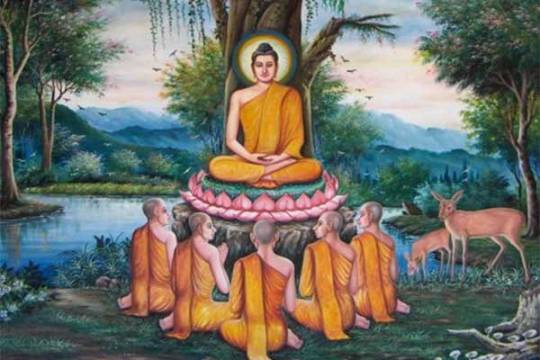
WHICH CELEBRATES THE BEGINING OF BUDDHISM AND THE FIRST OF THE 8 STEPS (the first spoke of the Dharma Wheel) TOWARDS ENLIGHTENMENT
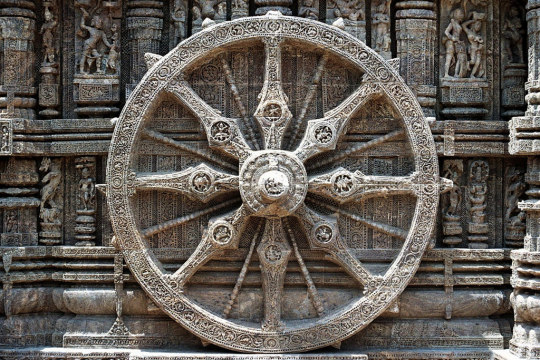
AVATAR IS ALL ABOUT CYCLES
THE SOUTHERN RAIDERS IS ALL ABOUT BREAKING THEM
I haven’t even touched Jung, Koh, Hinduism, and Buddhism yet

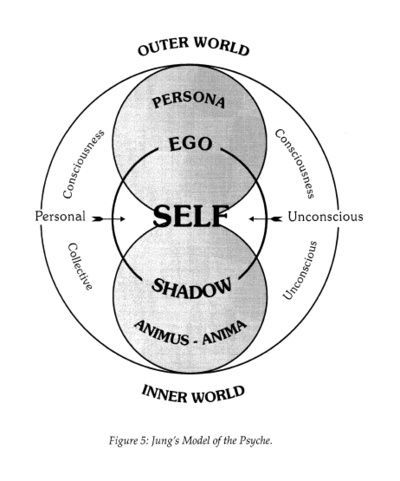
or the fact that Katara and Kya are the only characters in the entire series to wear moons on their clothing and that, together, they form an actual lunar phenomenon



or why the spirit oasis isn’t a complete circle
or the fact that this thing that Aang is told to chase is just like Whaletail Island:

or how important the Great Divide and the Solstice are

AND I’M JUST GETTING STARTED
BECAUSE EVERYTHING IN THE SOUTHERN RAIDERS--RIGHT DOWN TO THE SOUND DESIGN--IS ABSOLUTELY MONUMENTAL IN UNDERSTANDING THE SHOW, ITS MESSAGE, ENERGYBENDING, AND LITERALLY EVERYTHING ELSE
TLDR: Idk how the heck I’m going to arrange or articulate this analysis because it is WILD. Be warned: There is literally no exact beginning and ending to this analysis because the whole point of Yin and Yang is that is has no beginning or ending (...kindof...), so you’ll have to bear with me once I’m done editing it into something that’s somewhat coherent.
These are just SOME of the things I’ve been able to answer with my moon theory and analysis of The Southern Raiders as it currently stands:
Why “letting go” isn’t really letting go (as we understand it...see: Aang’s confrontation with Koh)
Why Lake Laogai and the Spirit World are symbolically the same thing.
Zuko’s advice to the bullfrog is actually a summary of the show, energybending, the origin of bending, and the definition of Aang’s “forgiveness” I stg
Why “Sokka’s instincts” are the reason Katara yells at Sokka
Believe it or not, every time Katara mentions her mother, it is at specific times for specific reasons.
^^^same thing for the moon, lack of moon, moon positioning, etc.
Katara’s mother’s necklace is more important than we realize.
Who the faces of Koh are and WHY they are there.
The true meaning of Jet’s sacrifice.
Why Jet’s episode about the dam explains the entirety of TSR as it pertains to Katara (all the way down to the little girl who runs to get her doll after the dam breaks)
Why Katara actually DID forgive Yon Rha, and the fact that she doesn’t even know it is proof that she did
^^^^^Aang’s definition of forgiveness is completely misunderstood by the fandom, and the way he “forgives” is sososo much deeper than “moving on”, and it is DEFINATELY by no means “doing nothing” or “excusing” past actions.
The importance of lightning, Zuko, Aang, and Katara.
The absolutely monumental and not nearly talked about importance of Jeong-Jeong like holy crap.
How Katara and Azula are just as much of a Yin and Yang as Zuko and Aang but not in the way we think they are
Why Koh has the Blue Spirit’s face
Why Koh DOESN’T have the Painted Lady’s face.
Who Ni-Ni from Katara’s campfire story in The Puppetmaster is
How and why Iroh was able to learn firebending from the Masters even though he didn’t have a partner.
How/Why Azula had her breakdown and why she saw her mother in the mirror
Why “Leaves from the Vine” and “Four Seasons” are the same song, explain Azula’s downfall, and explain the Yin and Yang of TSR.
Why Katara and Sokka are so often mistaken for parental figures.
Why Aang’s flashbacks to the Air Nomads are so important in understanding TSR.
Why Toph and Suki disappear after the campfire in TSR.
How Hakoda, Gyatso, and Kya are all connected.
Why it is so dang important that Azula shows up in the beginning of TSR.
The importance of the Spirit Oasis.
Energybending, healing with waterbending, Aang’s trauma, and Zuko’s scar.
Why Zuko gives Katara the exact opposite advise in TSR that he gave her in the catacombs.
How everything could be predicted and read by the moon.
WHY YIN AND YANG ARE THREE THINGS AND HAVE ALWAYS BEEN THREE THINGS.
HOW ALLLLLLLLLLLLLLLLLLL OF THIS TIES BACK TO THE MOON AND BUDDHIST BELIEFS--AND YEAH THE MOON AND BUDDHISM AND HINDUISM ARE MORE CONNECTED IN ATLA THAN YOU CAN IMAGINE.
AND HOW IT LEADS INTO OUR MODERN UNDERSTANDING OF THE SELF--BECAUSE JUNG TOOK GREAT INFLUENCE IN HIS DEVELOPING THEORY OF THE CONSCIOUS AND THE SUBCONSCIOUS FROM THE HINDU/BUDDHIST RELIGIONS
^^^^AND ALSO THE THEORY OF THE SHADOW AND THE PERSONA
The ocean is a deep, dark, unknown place with a lot of hidden monsters (like Yon Rah). Katara needed a light to find her monster, but she also needed somewhere she could breathe when she came back up for air.
If she didn’t have both Zuko and Aang, Katara would have drowned.
I wasn’t kidding when I said this was a thesis, and what I’ve said and listed here isn’t even all that I have.
btw This all does line up on the traditional Yin Yang symbol we know and see in the show, but I don’t have enough space here for that lmao. That’ll be in the analysis
I hope you enjoyed this little taste, my friend, because I need to sit down for a hot second before my brain leaks out of my ears. Sorry for the ramble. I promise the analysis isn’t like this lol. This is just me trying to summarize as best as I can.
***Disclaimer: My points are always subject to change since I am still researching. These are the facts as I’ve found and applied them to the evidences I’ve noted from in the show. I’m always open for friendly discussion or any directions to better sources on Buddhism/Tao/Jung!***
#Aang#Katara#Zuko#avatar the last airbender#azula#sokka#atla#I need to lie down#The Southern Raiders#Moon Theory#the cuddles have spoken#kataang#gaang#answered#vanillabutspicy#thanks for the ask!#I hope this sated you for the time being lmao#i am still learning these religions and want to get them right tho😅#mymetatag#meta#post
237 notes
·
View notes
Text
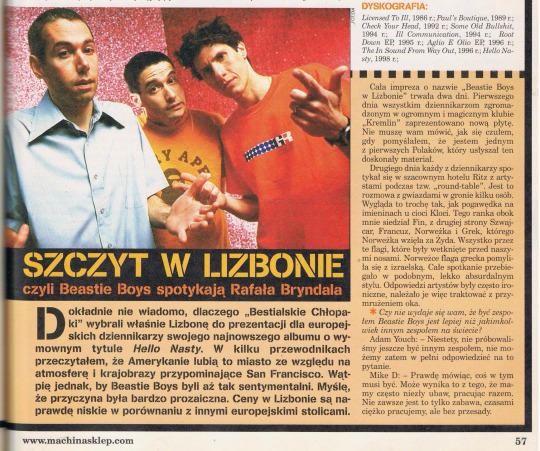

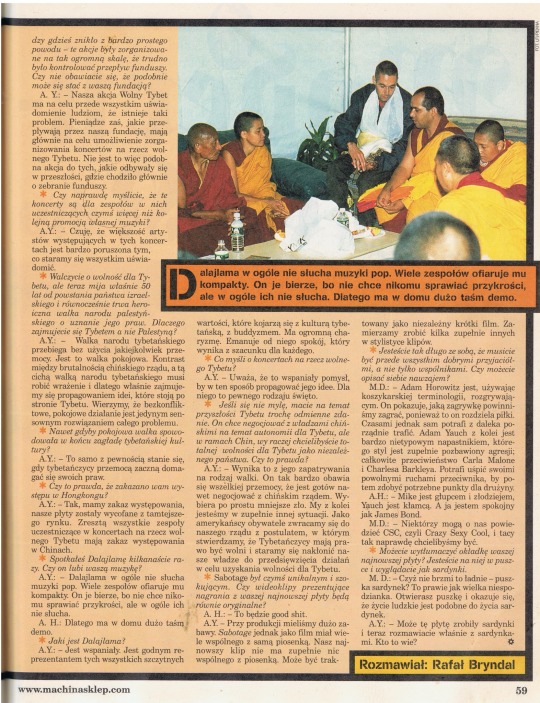
Interview with Beastie Boys for Machina magazine, 07/1998
By: Rafał Bryndal
Translation: Anna Bak ( @styleiswild )
-------------
Introduction: The party called Beastie Boys in Lisbon went on for two days. On the first day we (the journalists) were invited to the magical “Kremlin” club to listen to the new album [Hello Nasty]. I don’t think I have to explain how I felt knowing that I was possibly one of the first Polish people to listen to that phenomenal record. On the second day each of us got to meet the band in Hotel Ritz during the so-called “round-table.” It’s like a private conversation with the artists. It looks a bit like a coffee party at your aunt’s. (…) The whole meeting was just as absurd, in a positive way. The answers they gave us were often ironic, as one could expect.
R.B.: Don’t you think that being Beastie Boys is way cooler than being any other band in the world?
MCA: Unfortunately, we haven’t tried being a different band yet. So I can’t really answer your question.
Mike D: To be honest, there’s something to it. Maybe because we have so much fun working together. It’s not always fun, of course. We do work from time to time, but only sometimes.
R.B.: It seems like you work on your albums for fun and pleasure exclusively?
Mike D: I think it’s because we don’t release them that often.
Ad-Rock: Yes… Yes, you must be right, man.
Ad-Rock: Yes… Yes, you must be right, man.
MCA: Hey, we’d released Ill Communication after a two year break.
R.B.: Yeah, but this one took you four years.
MCA: Yeah, we had to level it out. It takes us three years most of the time.
R.B.: You grew up together. Are you always on such good terms with one another?
MCA: Sometimes there’ll be tripartite fights. Not sure you’ve ever seen what it looks like when three people fight each other. Each of them against the other two. That happens sometimes. Rarely, though. To be honest, we don’t really argue much.
R.B.: Your new album seems a bit like a departure from The In Sound from Way Out!
Mike D: Hello Nasty is a collection of a dozen or so songs, each of them stylistically different. That’s why you can’t really compare it to our previous releases. I guess, though, that at least two of the songs would’ve worked well as instrumentals on the previous album.
R.B.: How do you deal with the new technologies in music?
Mike D: Technology is present in all genres today and you can’t run from that. Music evolves largely thanks to the new technology. Especially hip hop music. We do it like the true rappers do, which means we start with a drum machine, then we put it on a loop, and then we use digital delay system. That’s one of the newest inventions. Technology is unpredictable, because people – who are its creators – have no clue about what the artists can do with it.
R.B.: Is it true what they say on the internet? That this album is the first one of the three that you’ve recorded lately?
MCA: You’ve really heard about that?
Mike D: Gosh, you can’t keep anything secret today.
Ad-Rock: Three? To be honest, we’ve got many more albums recorded.
Mike D: The last one of the three is a country album. The genre is so popular that you can’t really keep such a record a secret anymore. Especially when you’re in Manhattan and you walk around in a cowboy fit, it’s suspicious as hell. Because there aren’t many cowboys in Manhattan. People see a guy in a cowboy fit and assume that he has to be working on a country album.
R.B.: Is it really so important for your clothes to fit the style of your music?
MCA: You identify with your music more when you dress up. People often cheat, they wear clothes that don’t fit the music they play.
R.B.: So what kind of clothes did you guys wear when working on Hello Nasty?
MCA: I wore a bat girl costume.
Ad-Rock: I dressed up as a scared woman.
Mike D: I’d wear a bathing suit, because I wanted to go swimming all the time.
Ad-Rock: We couldn’t really find what we were looking for at first. We tried on a range of fits and finally found those that went well with our music.
R.B.: You’ve been popular with skateboarders. It’s a group of people who wear unique clothes and listen to a lot of your music, as it seems. Do you identify with this subculture?
MCA: I don’t think it’s just that one subculture. There are a few more we’d like to identify with.
Mike D: For me it’s long gone. Skateboarding isn’t much of an extreme or exclusive kind of sports discipline anymore. It’s become very popular.
R.B.: You’ve worked with Lee “Scratch” Perry on the new album. Can you tell me what kind of benefits did that bring you?
Mike D: It’s hard to say, but we’ve always been pretty impressed with his work on dub music. He’s also inspired Mario Caldato, our studio engineer. For me, Lee is an artist of science, a living fucking legend.
R.B.: Do you think that you can inspire young musicians?
MCA: Sure, but that’s a normal thing, right? If music is evolving as a part of culture, then everything and everyone inspires that process. We’re happy that we can be a part of that culture to some degree.
R.B.: A lot of white kids have gotten into rap music thanks to “Rhymin’ & Stealin’.” At least that’s what happened to me…
MCA: As a white kid… Right, it’s hard to be a black kid in Finland.
Mike D: We discovered hip hop when we were thirteen or fourteen. We’d go and see Public Enemy and bands like that. We were totally enchanted. It’s not that weird that kids who listen to us want to do the same thing.
R.B.: Some people say that you don’t like it when other artists sample your music. Some say that you’re more liberal, though.
MCA: It all depends on how the sample is used. If it’s creative, then we’re here for it. But if they go and copy our own ideas, and the whole track revolves around that idea, then we’re obviously pissed off.
R.B.: Are you as satisfied with making music as you’re with your magazine and your record label?
MCA: It’s all really about creating something new, publishing the mag, recording albums or playing gigs… We’re really into humanitarian work, too. Sure, the music is the most important thing of all. Nobody knows where it comes from, it’s hard to define the process of making music. It comes from subconsciousness.
R.B.: I’ve heard that you were to make a movie based on your “Sabotage” video?
Mike D: Unfortunately, that’s not true.
MCA: It doesn’t change the fact that we’re planning to make a movie…
R.B.: About what?
MCA: You can actually watch it in the cinema already, because Spice Girls had stolen our screenplay and made it their own.
R.B.: In the 80s there were a lot of humanitarian aids, like benefit concerts during which quite a lot of money got lost for a very simple reason. Those actions were organized on such a grand scale that it was nearly impossible to control the funds. Aren’t you scared that the same thing can happen to your organization?
MCA: Free Tibet is there to help people find out about the issue and educate them on it. The money that we get helps us organize the Tibetan Freedom Concerts. It’s not like those other actions from the past that were strictly about collecting funds.
R.B.: Do you believe that the bands you invite to play consider the gigs something more than simply another type of self-promotion?
MCA: I feel that most of those artists are really moved by the issue we’re trying to bring to people’s attention.
R.B.: You’re fighting for free Tibet, while recently it’s been 50 years since the State of Israel was formed. And Palestinians are fighting for their rights to be respected. Why have you taken on Tibet and not Palestine?
MCA: Tibetans’ fight is based on the idea of non-violence. It’s a peaceful fight. The contrast between the brutality of the Chinese government and that quiet fight of Tibetans does make an impression, and that’s why we’re popularizing the ideas behind the Tibetan struggle. We believe that the non-violent, peaceful act is the only logical way of dealing with the issue.
R.B.: Even if the peaceful fight ends up leading to the extinction of Tibetan culture?
MCA: The same thing will happen if Tibetans decide to use violence as a means to gain their freedom.
R.B.: Is it true that your music is banned in Hong Kong?
MCA: That’s right. We can’t play there. Our albums can’t be sold on their market. All of the bands playing for Milarepa are banned from performing in China.
R.B.: You’ve met Dalai Lama on several occasions. Does he like your music?
MCA: Dalai Lama doesn’t listen to pop music at all. Lots of bands give him their CDs. He takes them because he doesn’t want them to feel bad, but he won’t give them a listen.
Ad-Rock: That’s why he stores so many demos at home.
R.B. What is Dalai Lama like?
MCA: He’s fantastic. He’s a great role model, representing all of the values people associate with Tibetan culture, with Buddhism. He’s got great charisma. He oozes calmness that comes from the respect he has for everyone.
R.B. What’s his opinion on Tibetan Freedom Concert?
MCA: He thinks it’s an excellent way of spreading his word. For him, the concert is a kind of holiday.
R.B.: As far as I know, you have a slightly different view on the future of Tibet. He wants to negotiate with the Chinese government about Tibet’s legal right to autonomy in China, while you fight for total freedom for Tibet as a sovereign country. Is that true?
MCA: It’s related to his view on the type of fight. He’s so scared of any form of violence that he’s ready to negotiate with the Chinese government. He’s choosing the lesser of two evils, that’s what he’s doing. We’re in a completely different situation, though. As American citizens, we want to speak with our government about freedom for Tibet. We believe that Tibetans should be free and we want to encourage the government to take action to help Tibetans gain autonomy.
R.B.: The “Sabotage” music video was unique and quite shocking. Are your new clips going to be equally as original?
Ad-Rock: It’s gonna be some good shit.
MCA: We had lots of fun working on it. The “Sabotage” video had a lot to do with the song, though. Our new clips won’t have anything to do with the songs. They can be treated as independent short features. We plan to make a couple more totally different clips.
R.B.: You’ve been a band for so long that you must be best friends and not only, let’s say, collaborators. Can you please describe one another?
Mike D: Adam Horovitz is, to use basketball terminology, the play maker. He shows us how we’re supposed to play because he’s the one in charge of the balls. Sometimes he can’t score from a distance, though. Adam Yauch, on the other hand, is a very unusual power forward. His style is completely devoid of aggression, unlike Karl Malone’s. Or Charles Barkley’s. He can dull his opponent’s vigilance with his slow moves and get all the points.
Ad-Rock: Mike is an idiot and a thief. Yauch is a liar. I’m as cool as James Bond.
Mike D: Some people might say that we’re CSC. Crazy Sexy Cool. And that’s what we wanna be.
R.B.: Can you explain your record cover? You’re in a tin and you look like sardines.
Mike D: Doesn’t it sound pretty? “Sardine tin”? It’s almost like a big surprise. You open the tin and it turns out that people’s lives are similar to the life of sardines.
MCA: Maybe this album was recorded by sardines and you’re now talking to them? Who does know?
#beastie boys#mca#adam yauch#ad rock#adam horovitz#mike d#michael diamond#1998#90s#hello nasty#hello nasty era#scans#interview#music interview#beastie boys interview#this is not an ‘official’ translation ofc#done it in my free time#my posts
30 notes
·
View notes